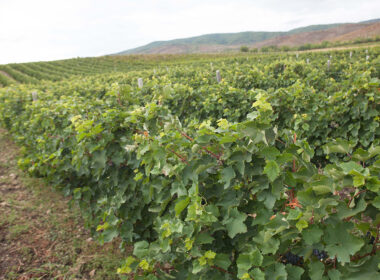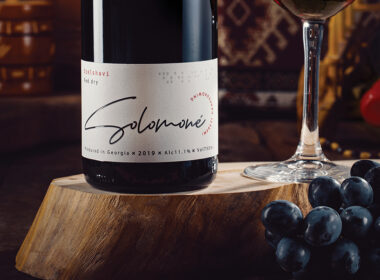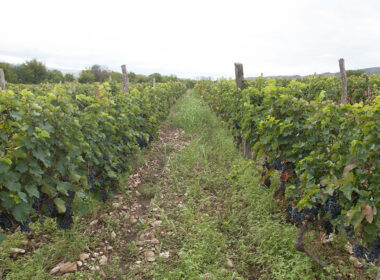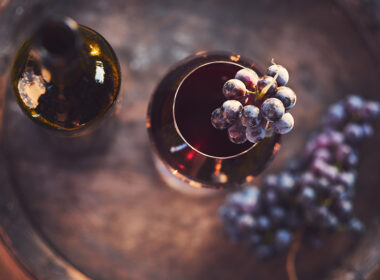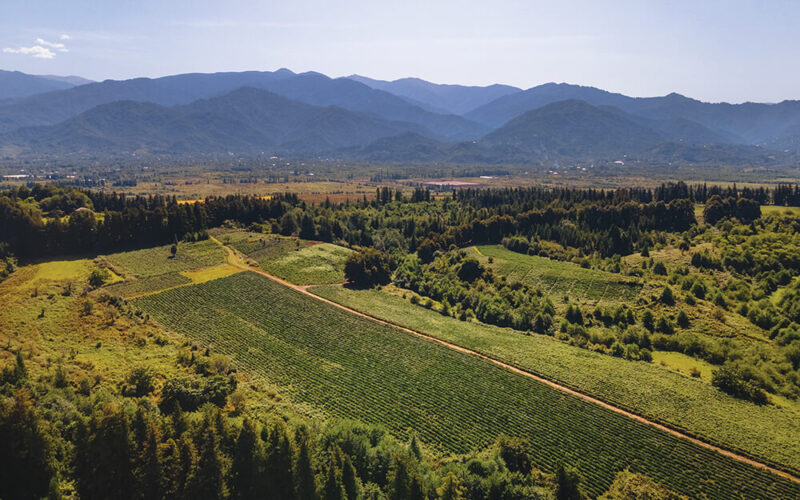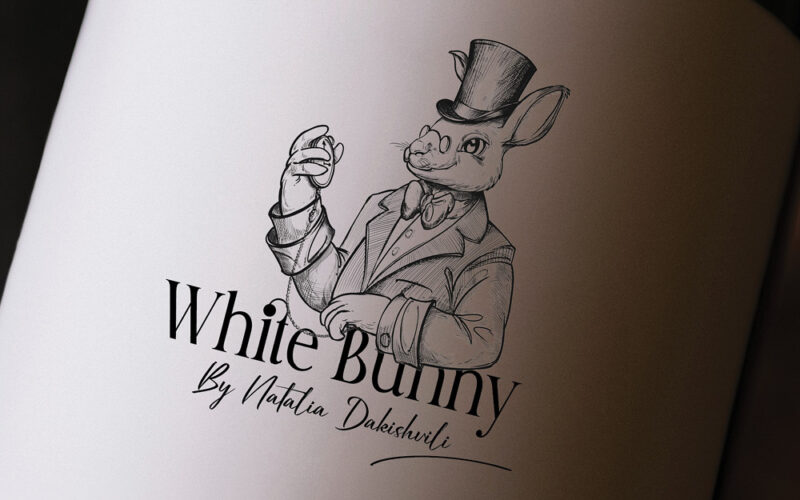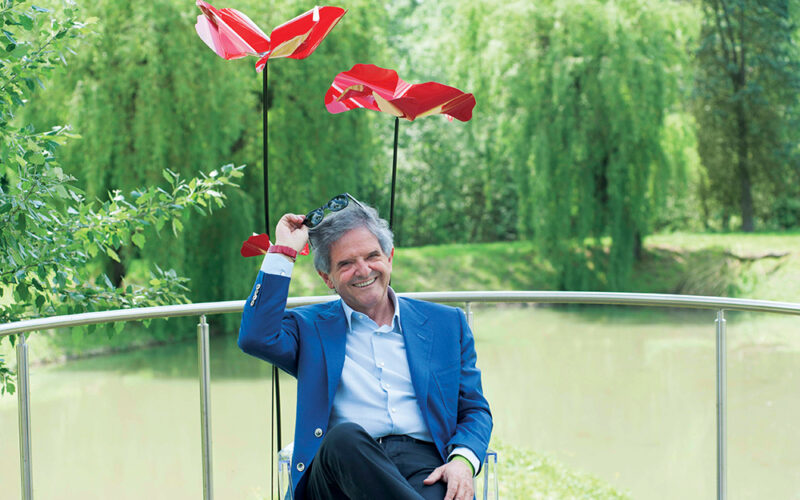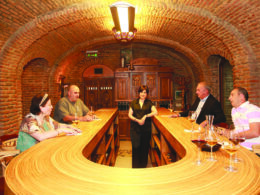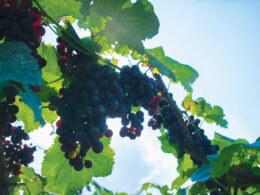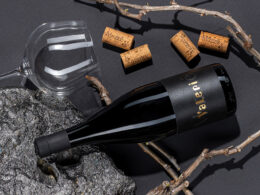| GIORGI SAMANISHVILI | Enologist

The Guria region encompasses the southern peripheral part of the Colchis Lowland and the northeastern extensions of the Meskheti Ridge. To the north, it borders the Samegrelo-Zemo Svaneti region, to the east, the Imereti region, to the south, the Autonomous Republic of Ajara, and to the west, the Black Sea. Covering an area of 2033.2 square kilometres, its administrative centre is Ozurgeti.
In comparison to other winegrowing regions of Georgia, Guria may have slightly smaller vineyard acreage, but it holds significant importance. First and foremost, it’s crucial to emphasise that before the emergence of diseases, Guria, alongside Samegrelo, held significant importance. This explains the diversity of autochthonous varieties found here. When discussing Guria and its grape varieties, I believe we should always begin with Chkhaveri because it epitomises “the quintessential Gurian variety” in the truest sense.
Chkhaveri defies categorization – its wine can vary from white, crafted with brief maceration, to amber or even rosé. In a blind tasting, if the taster is unfamiliar with the variety or lacks knowledge of Chkhaveri, they simply won’t be able to accurately assess this wine.
Chkhaveri is a grape variety capable of producing all types of wine. While I occasionally reference it, alongside Ojaleshi, as one of the exceptional varieties, Chkhaveri is inherently more exotic than Ojaleshi and defies all conventional standards. In winemaking, departing from the norm is the ultimate compliment, both to the variety itself and to the resulting wine.
The earliest mention of Chkhaveri that I’m aware of dates back to the 1820s in Jacques Francois Gamba’s journey to Georgia. Gamba recounts that during his visit to the family of Jacob Mari, he sampled an outstanding wine made from grapes that do not turn red even when fully ripe. Although the name Chkhaveri isn’t specifically mentioned in the account, it is portrayed as the finest wine.

Amiran Dolidze | Vineyard Dolidze: Normally, wine enthusiasts visiting Georgia seek out wines crafted from more renowned varieties, such as Rkatsiteli and Saperavi. However, upon discovering Chkhaveri, they are consistently caught off guard because this grape variety distinguishes itself from all others with its unique character, colour, and taste.

Levan Ujmajuridze | Director, Dr, Professor | Academician of Georgian Academy of Agriculture Sciences (GAAS) | LEPL SCIENTIFIC-RESEARCH CENTER OF AGRICULTURE| Academician|: Chkhaveri is a distinctive grape variety renowned for its organoleptic characteristics. Its uniqueness is defined by its delicate wine profile, distinct taste, and moderate alcohol content. The agronomy employed for Chkhaveri differs from that used for other cultivated varieties. It necessitates a relatively tall trunk, as this variety thrives best when allowed to grow without restriction. Additionally, the vines require long spur pruning to ensure they bear a sufficient load. Additionally, the choice of rootstock is crucial, particularly considering the specificities of Guria’s soils. Achieving a high-quality grape harvest also depends significantly on factors such as the cumulative active temperatures and the hydrothermal quotient specific to this variety. Hence, Chkhaveri’s agronomy is a separate phenomenon that operates outside conventional standards, but is still regulated.

David Chichua | LEPL Scientific-Research Center of Agriculture|: Varieties of Colchian origin thrive in the unique climatic conditions of the Black Sea coast, which, I believe, cannot be replicated elsewhere on Earth.
The wettest period here occurs in August and September when precipitation levels reach their peak. The majority of Gurian and Megrelian varieties boast an exceptionally long growing season.
During times of excessive rainfall, when the threat of fungal infections is high, Gurian and Megrelian varieties retain their green colour, providing them with protection against these infections. In certain years, Guria experiences favourable conditions, and only when October is sunny and warm does the ripening of Chkhaveri commence.
Giorgi Samanishvili: The extended vegetation period is a key characteristic that sets Chkhaveri, Aladasturi, and Ojaleshi apart.
Levan Ujmajuridze: Therefore, in terms of ripeness, the majority of them are classed as late-ripening varieties.

Zurab Topuridze |Winery “Iberieli”/ “Natural Wine Association”- Co-founder| : Chkhaveri was initially introduced to me by my grandfather, who came from Samegrelo and served as an officer to the king. In the 1930s, to escape being shot, he followed the advice of his friends and relocated to Bolnisi, where German (Swab) colonists resided and were involved in viticulture and winemaking. This Megrelian gentleman cultivated four varieties in Bolnisi – Rkatsiteli, Saperavi, Goruli Mtsvane, and Chkhaveri. He was well aware that Chkhaveri was not only one of the finest grape varieties but also served as Guria’s calling card.

David Kobidze |”Kobidzeebis Marani, Dato’s wine,” viticulturist-winemaker. “Gurian Vine and Wine Cluster” Co-founder|: I have enjoyed a long-standing friendship with Zurab Topuridze. He was the first winemaker to bottle Chkhaveri after the Soviet era. The revival of Chkhaveri production and bottling after a 30-year hiatus was a significant milestone for the people of Guria. Presently, Batoni (Georgian title of respect akin to sir) Zurab exports wines from his wine cellar to over ten countries.
At a young age, I was among the first to start cultivating Chkhaveri in Guria. However, I approached the prospect of bottling wine with great caution and even trepidation. Mr. Zurab Topuridze stood by me, generously sharing his knowledge and experience, and assisted me in selling the wine after it was bottled.
Zurab Topuridze: In 2009, I crafted Chkhaveri for the first time, and it turned out to be exceptionally good. In the subsequent years, I found it challenging to surpass its quality. I experimented with various methods, including short maceration on a small amount of chacha (pomace), long maceration on a small amount of chacha, and long maceration on full chacha. This variety demands a significant amount of effort and careful consideration to achieve the desired results in winemaking. Chkhaveri can be a challenging partner in both viticulture and winemaking. At times, it’s possible to produce varying wines from the same vineyard, even under nearly identical climatic conditions and employing the same processes (such as short maceration on a small amount of chacha).
However, this variability could also be attributed to differences in soil composition across the slopes rather than solely on the complexity of the variety itself. Even today, there remains ample room for experimentation and refinement. Over the course of the last 13 years, I have achieved success on three occasions – in 2009, 2012, and 2016 – and these vintages produced the finest wines. It’s also worth mentioning the 2021 Chkhaveri, which was crafted without skin contact.
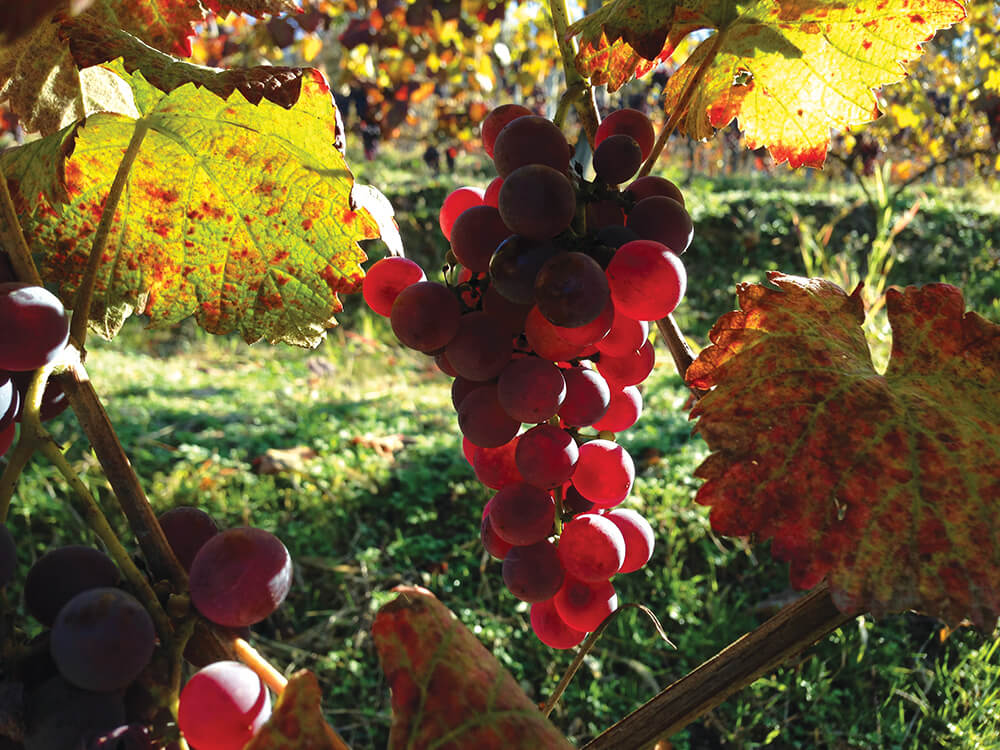
Levan Ujmajuridze: This is a matter that warrants discussion both in theory and in practice. Soils and the orientation of plots play a crucial role in the cultivation of Chkhaveri. As you are aware, we don’t have a wide variety of soils to choose from in Guria. The predominant soil types in this region include red, brown, humus-carbonate, and alluvial.
Before deciding to plant new vineyards, it’s essential to conduct a preliminary assessment of the site. This assessment should consider not only climatic conditions, but also soil characteristics such as proximity to groundwater, soil acidity, and fertility. Once these factors have been adjusted as necessary, we can begin to consider agro-technological or other measures related to planting a new vineyard.

Andro Vashalomidze |Viticulturist-Winemaker|: In Guria, there is a prevalent red soil characterised by high acidity and low humus content. However, this soil type offers a significant advantage: volcanic rocks, rich in trace elements, which enrich the grapes and wine with unique aromas. Therefore, Gurian wines are renowned for their distinctive aromas. Despite the lower humus content, proper fertilisation can yield excellent results from soils of this composition.
Zurab Topuridze: Low humus content is beneficial because it allows for soil fertilisation. Conversely, when humus levels are high, nothing can be done, it will ruin the wine.
Andro Vashalomidze: It’s important to consider that in recent years, the climate has been deteriorating. While we can’t halt this process, we must strive to adapt to the new reality. It’s evident that air humidity has risen, particularly noticeable in Ozurgeti, leading to an increase in diseases. Additionally, I’ve observed that grapes are accumulating more sugar than they did, for instance, 10-15 years ago, yet their aromas are diminishing. In other words, while the grapes are sweeter, the aromas aren’t as pronounced as they once were.
Giorgi Samanishvili: This is a situation where sugar ripening is increasing, but the flavour fails to catch up.
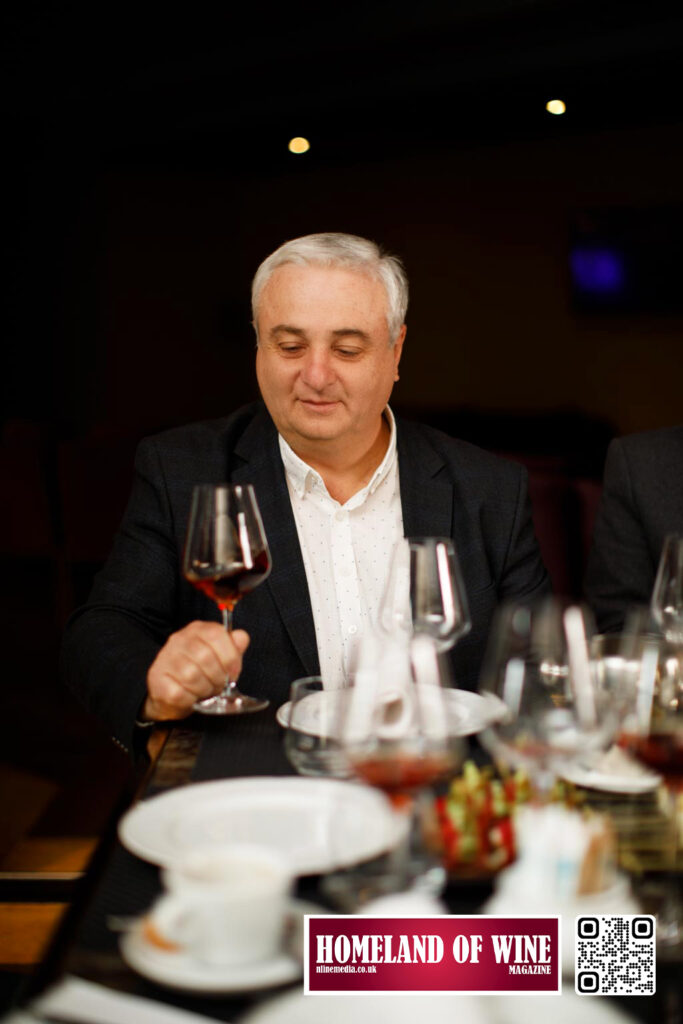
David Maghradze |Institute of Horticulture, Viticulture and Oenology, Tbilisi, Georgia · Grape and Fruit Germplasm Research, Genetics and Breeding, Dr. of Agricultural Sciences|: In response, the National Wine Agency has compiled and distributed a manual for practitioners titled Climate Analysis for Modern Viticulture of Georgia, available in both Georgian and English. Collaborative research with the University of Milan revealed that in 1994, there was a 1.2-degree increase in the average annual temperature.
Much has evolved in viticulture since then. This altered climatic landscape has been comprehensively analysed in the aforementioned book, offering tailored recommendations for each region of Georgia based on altitude limits and guidance on how modern viticulture can adjust to this new reality.
David Chichua: When discussing climatic conditions and the corresponding agronomy, it’s essential to mention the phenomenon of Maghlari (ancient Georgian cultivation system where vines are trained to grow up trees) vineyards. A practical solution to overcome Guria’s challenging terrain is Maghlari vineyards. As vines naturally seek optimal exposure, training them onto trees ensures that 90% of the vegetative mass and fruit receive ample sunlight. This intriguing aspect shouldn’t be overlooked when considering Guria’s viticulture.
Giorgi Samanishvili: Batono Andro, you have quite a few local varieties in your collection. Could you tell us about them?
Andro Vashalomidze: From the outset, my mission in seeking and planting Gurian varieties has been to phase out those that were imposed on our region, be it for objective or subjective reasons (including Isabella). I’m continuously on the lookout for local varieties, and despite Guria’s relatively small size, encompassing just three municipalities, I actively collect them. Come Autumn, I am sending these samples to Mr. Levan Ujmajuridze at the research centre for identification. Additionally, I maintain a collection plantation in Ozurgeti, where I’ve gathered 17 Gurian varieties. These include: Sakmiela, Chkhaveri (two forms), Atinauri, Tetri Chkhaveri (entirely different from the renowned Vardisperi (pink) Chkhaveri, despite the shared name), Ayeti (a provisional name pending identification), Skhilatubani, Mtredispekha, Aladasturi, Chumuta, Kamuri Tetri, Klarjuli, Orona, Jani, Badagi, Tsitlani, and an additional intriguing white grape variety yet to be identified. Today, we’ll have the opportunity to taste wines made from seven of these varieties.
David Kobidze: Years ago, during my quest for Gurian varieties, I encountered Batoni Andro in Ozurgeti. Initially, he regarded me with suspicion, perhaps due to my youthful appearance. However, he eventually took me to his car and drove me to a local family’s residence. There, in the yard, stood a large tree with the ancient Gurian variety Badagi trained onto it. He requested a sapling from the owner, who promised to provide it the following year. However, Batoni Andro insisted, stating, “This young man has come all the way from Chokhatauri, and we cannot let him leave without a sapling.” Eventually, Batoni Andro and I departed with two saplings. Even today, rare Gurian varieties remain challenging to come by, and it’s thanks to him that I was able to plant Badagi and produce wine from it. Presently, we have 15 ancient Gurian grape varieties thriving in our collection plantation.
Levan Ujmajuridze: From Chkhaveri, the flagship variety of Guria, we transition to explore other varieties typical of this region. Many of these, along with varieties from other regions, were repatriated to the Jighaura collection plantation from abroad. Our initial expeditions to the villages of Guria were made possible thanks to Batoni Andro, and we documented each grape variety we encountered, collecting samples along the way.
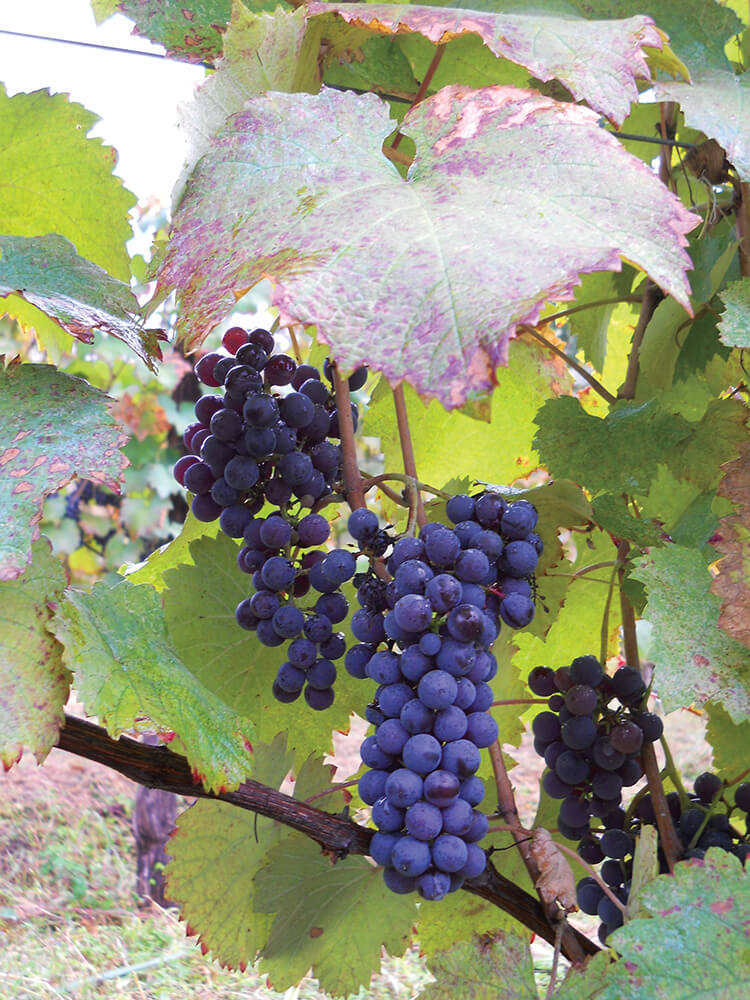
The ampelographic characteristics of these specimens were thoroughly studied at the Scientific Research Center of Agriculture. The identified varieties are now being cultivated in the Jighaura collection plantation. In Guria alone, approximately 210 specimens have been discovered, and with meticulous record-keeping, they are now well-preserved. Similar expeditionary efforts will persist in the future across all three municipalities of the region.
Varieties preserved in collection plantations play a crucial role in conserving the gene pool. Alongside studying their ampelographic characteristics, we also analyse their organoleptic traits, set up wine analysis samples, conduct control tests, and assess the oenological potential of each variety. This marks the beginning of the journey, alongside Chkhaveri, for Gurian varieties such as Aladasturi, Jani, Skhilatubani, Mtevandidi, Orona, Chumuta (one of the finest red grape varieties cultivated across all three municipalities of Guria), Tsitlani, Badagi, Sakmiela, Mauri Tetri, Guruli Mtsvivani, and Guruli Ojaleshi, Tetri Chkhaveri, and others.
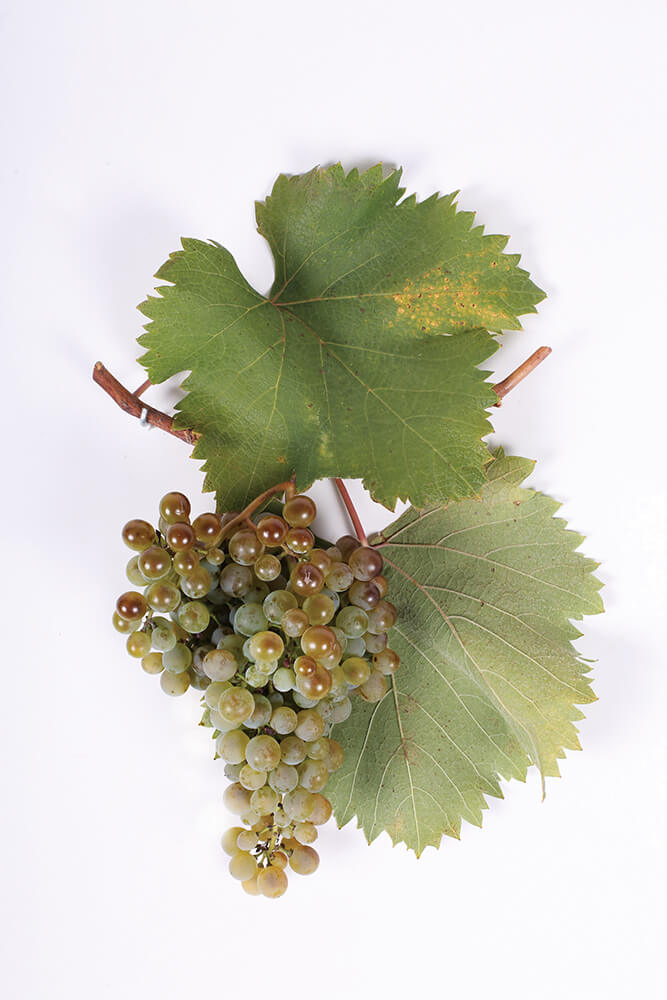
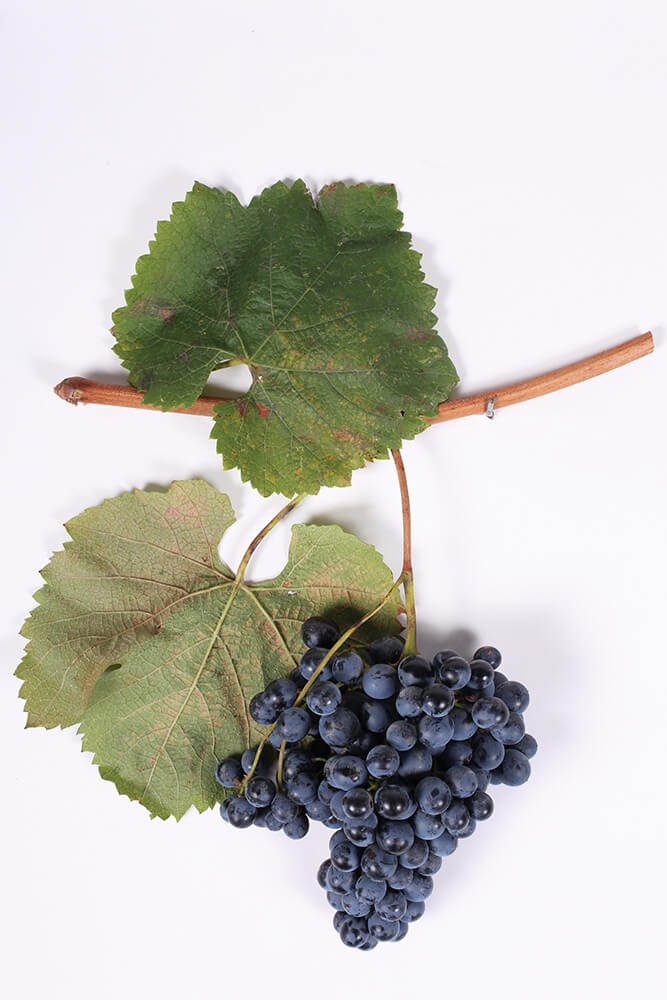
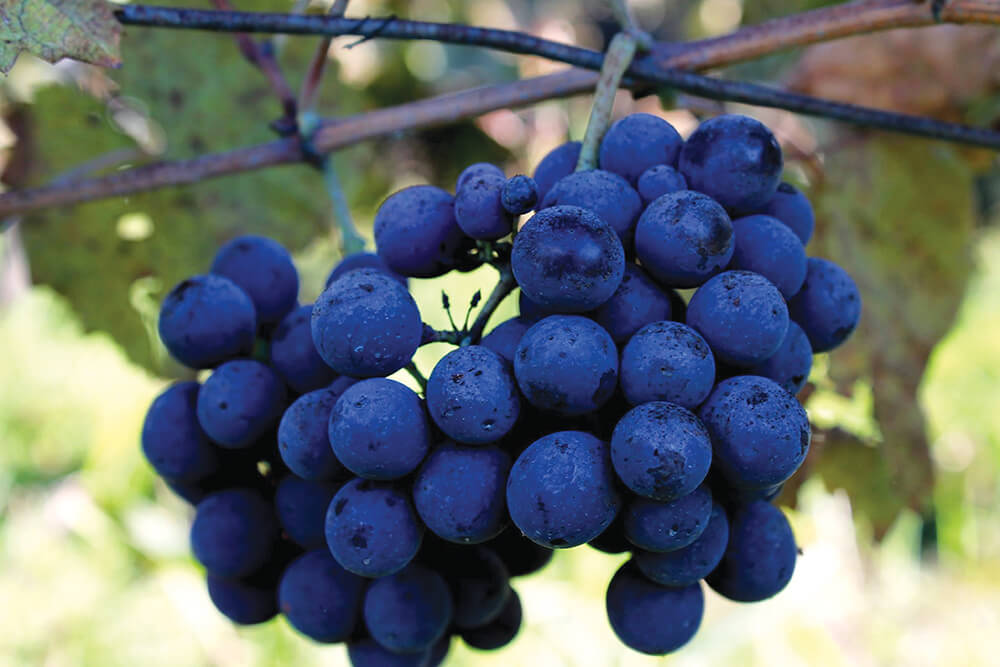
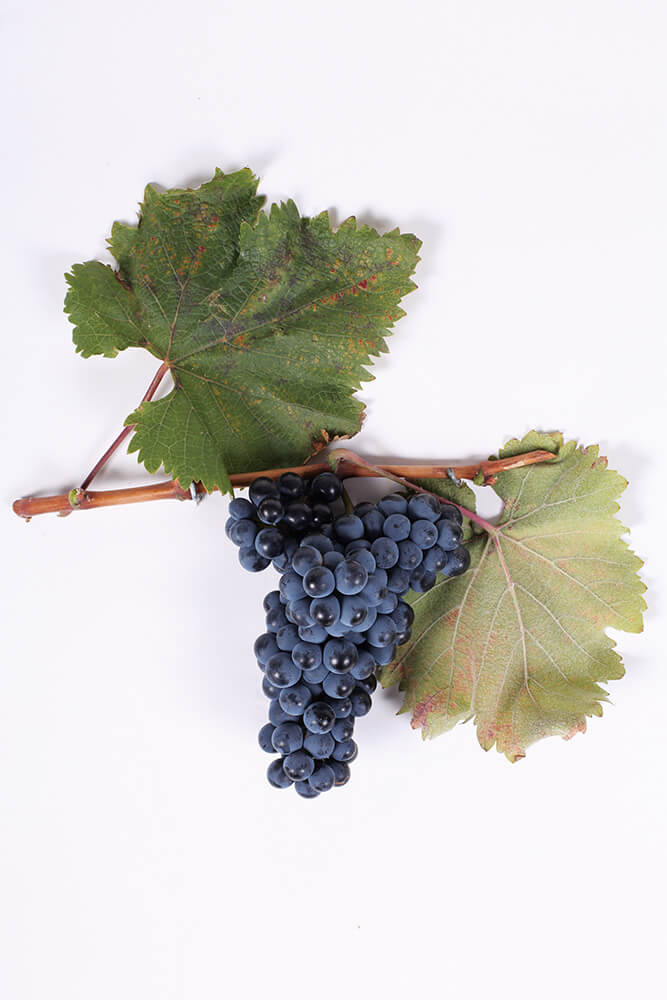
Zurab Topuridze: Are there two forms of Sakmiela?
Levan Ujmajuridze: Sakmiela is indeed one variety, but like many other cultivated varieties, it can have two or more phenotypically different clones. In 2023, the Jighaura base of the Scientific Research Center sent 550 samples of local grape varieties to the Spanish Institute of Vine and Wine Sciences for study using molecular markers. Among these samples was the Sakmiela variety, which is preserved in the collection plantation of Jighaura.
At this stage, we have also sent an additional 250 vine samples, including a sample of Sakmiela from Guria. We are awaiting the final results, and we suspect that these may represent two clones of the same variety. As you’re aware, clonal selection is fundamental in viticulture and winemaking worldwide, and it is also our future direction. Once a grape variety is identified, we can further explore and identify potentially interesting clones within that variety.
Andro Vashalomidze: From my collection plantation in Ozurgeti, I want to highlight primarily Badagi, Sakmiela, and Tetri Chkhaveri. However, other varieties are equally fascinating. Badagi, along with Chumuta and Mtredispekha, yield high-quality products not only in Chokhatauri, where viticulture is more established, but also in Ozurgeti and possibly Lanchkhuti municipalities, which are situated in the relatively lower Black Sea region.
Zurab Topuridze: It appears that Badagi is resistant to humidity.
Andro Vashalomidze: Historically, the homeland of this variety is Ozurgeti and Kobuleti – as we can see, God has clearly distributed these varieties wisely. Our ancestors were also wise people; for example, in the village of Shemokmedi, there were many varieties, but Aladasturi was not among them, indicating that it does not yield high-quality products in this area.

David Kobidze: I’d like to delve into the topic of Aladasturi as well. Erketi, our residence and the location of our vineyard and marani (wine cellar), holds a rich historical significance. The village is home to an ancient basilica-style church dating back to the eighth century, characterised by its unique single-nave design, a rarity in Georgia. Notably, one of its doors is crafted from vine wood, emphasising the longstanding tradition of viticulture and winemaking in Guria, spanning many centuries.
In our yard, two mulberry trees stood tall, and I vividly remember Aladasturi vines wrapped around both. When winter arrived and frost settled in, my father would harvest these grapes for us to enjoy as a fruit treat. It’s a versatile variety, suitable for both table consumption and winemaking.Today, it is cultivated in substantial quantities, and is used for crafting wine as well, however, I believe this variety requires even more attention.
Zurab Topuridze: Regarding another Gurian variety, Mtevandidi, I found its cultivation and upkeep to be challenging due to its delicate nature.
Levan Ujmajuridze: Your commitment to organic viticulture certainly adds to the difficulty.
Zurab Topuridze: Nevertheless, I’m determined not to give up and will continue to nurture it. Regarding the Tetri Kamuri, I’ve never vinified it on its own. Instead, I’ve blended it with Tsolikouri, fermenting these two grape varieties together, and they’ve complemented each other beautifully.
David Kobidze: I press Tetri Kamuri and Sakmiela together and create a blend. Kamuri tends to have relatively low acidity, whereas Sakmiela is known for its high acidity. These two varieties harmonised perfectly, resulting in a wine with an exceptional flavour profile.
Zurab Topuridze: I agree with you; Tetri Kamuri indeed delivers excellent results in coupage.
Giorgi Samanishvili: Undoubtedly, Guria boasts a rich diversity of grape varieties. However, to truly excel in winemaking, we must embark on exciting experiments in winemaking. Otherwise, there is no need for reinventing the wheel. Guria holds immense potential to emerge as one of the leading winemaking regions in Georgia.
David Maghradze: As mentioned by Mr. David Kobidze, the church door crafted from vines is just one of many such fascinating references to viticulture in Georgian culture, linked to the wild vine. The wild vine (Vitis Vinifera subsp. silvestris Gmel.), ancestor to our cultivated vines, once thrived across Georgia until the devastating impact of powdery mildew and later phylloxera in the mid-19th century. Remarkably, the ampelographic characteristics of the wild vine closely resemble those of its cultivated descendant, highlighting its ancestral significance.
The wild vine played a significant role in what we have been discussing today, in regards to shaping varietal diversity, marking the beginnings of vine domestication. Known as Mortskhula, it was prevalent not only in Guria but also in other parts of Georgia.
In Georgia’s history as the birthplace of grapevines, along with numerous archaeological discoveries, confirming the presence of wild grapevines—particularly their male variants—holds significant importance. I’ve been studying this since 2003 and have found samples from all across Georgia except for Guria and Samegrelo. Hence, I’d like to appeal to Gurians—I’m certain that within the forests of this region, there must be such a grapevine. It would be valuable to discover them and to incorporate them into the collective census we are currently compiling.
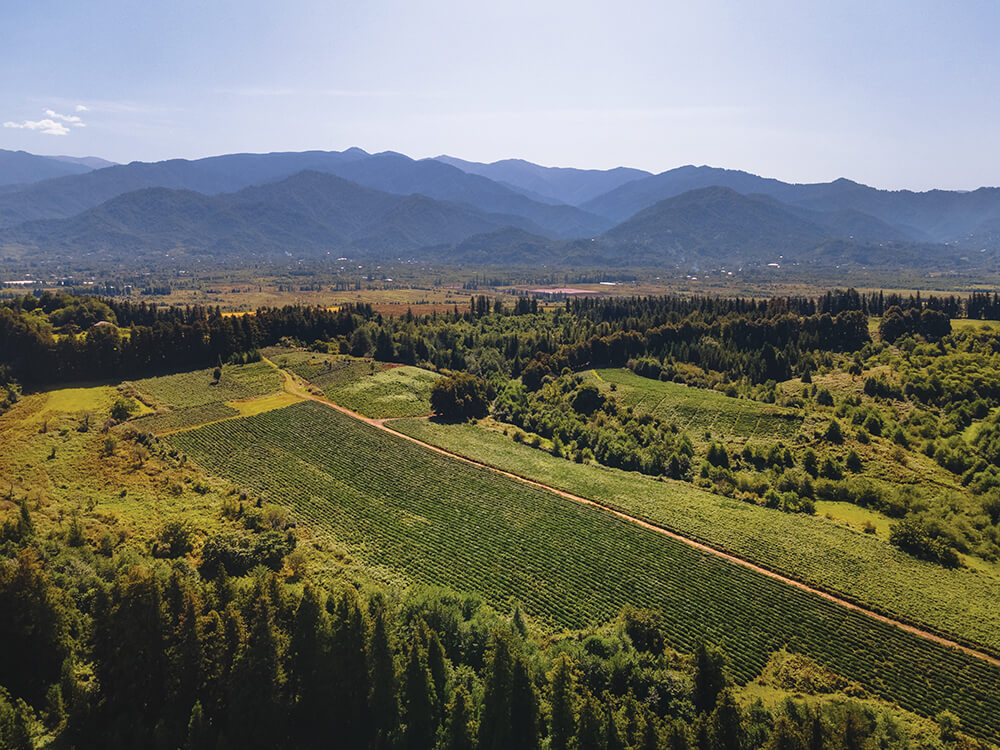
Regarding the process of vine domestication, wild vines were naturally trained onto trees in the forest. As you know, our native vine is inherently a forest plant and always seeks to climb to the top of trees to access maximum sunlight. This behaviour is innate and has evolved over time. Prehistoric humans initially brought wild grapes from the forest. Even after deforestation, they preserved the trees on which wild vines were entwined.
In the next stage of agricultural development, these trees were intentionally planted, and vines were cultivated on them. This practice is documented in 19th-century Guria. Agronomists from this period, such as Ermile Nakashidze, have described how the Maghlari vineyard was cultivated to grow on trees. It represents an ancient system of vine formation, serving as a transitional link from forest growth to cultivation in vineyards. Hopefully, in the future, we will preserve this type of vine formation, even if only at the level of an exhibit—perhaps as individual trees with vines standing in private yards.

According to Ampelography of Georgia (Ketskhoveli and others.1960), Guria boasts 59 grape varieties, while Imereti and Kakheti have 85 and 89 varieties respectively. This indicates a focus on developing grape varieties tailored to Guria’s unique conditions, rather than engaging in competitive breeding, a practice evident throughout the region’s history.
We must ensure that whatever grape varieties we have, they are brought back to Guria. The best guarantee for preserving a variety is when it remains in the hands of the farmer.
Levan Ujmajuridze: the majority of Guria’s vineyards were once dominated by the Tsolikouri variety from Imereti, followed by Chkhaveri, Jani, and Kamuri Tetri. The spread of phylloxera in Georgia began with its first observation in Abkhazia in 1881, followed by occurrences in Samegrelo, Guria, Ajara, and Imereti, before reaching Kakheti in 1906. The sole strategy to counter phylloxera was grafting vines onto rootstocks resistant to the pest, a method still used today (as stipulated by the law of Georgia’s on vines and wine , mandating new vineyards to use cultivated vine varieties grafted onto phylloxera-resistant rootstocks). In the fight against phylloxera, one of the varieties imported from Odessa was Isabella, a form of the American species, Labrusca, used for grafting varieties in Guria and other regions.
David Maghradze: Isabella grapes have a rich history, particularly in Guria, where they adapted well to the prevalent tree formation. Understandably, winemakers harbour scepticism towards this variety. However, I must emphasise that Isabella serves another purpose—it’s widely used for juice production. During the 2016 OIV Congress in Brazil, I observed that Isabella is highly prevalent there compared to other countries worldwide, primarily for juice production. Among the producers are also large wineries, which have two lines: one for white wines and the other for Isabella juice. I mentioned this because we have a plant in Guria, which is well adapted, its purpose as a wine grape is frowned upon, but processing and commercialising it in the form of juice, I think would be a very good alternative for Guria.
David Chichua: Zurab mentioned something really interesting that I think we should explore further: in Guria, winemaking is still mostly about experimenting. Right now, every winery makes small batches of really good wine. Therefore, as is practised globally, successful experiments in Guria should be scaled up for commercial purposes.

Regarding soils: Guria doesn’t have a uniform terrain. We can’t plant vineyards on the plains here because they aren’t suitable. We need slopes, instead of what’s present in Guria, hills, where the slope veers off every 100 metres. This means that even on one hectare, we can’t plant a completely homogeneous vineyard with consistent indicators. Additionally, the soil changes over short distances. With few exceptions, it’s acidic yellow soil with heavy loam, unsuitable for grape cultivation.
Levan Ujmajuridze: It’s important to acknowledge that in Guria, historically, there are already existing viticulture zones, (and more may be added), where it’s feasible to cultivate not only Chkhaveri but also other indigenous Gurian grape varieties, resulting in high-quality wines. These areas include the villages of Supsa, Gubazeuli, Khevistskali, Bakhvistskali, Natanebi, and the Bzhuzhi river valleys. There are spots in Guria, such as Askana-Bakhvi in the Ozurgeti municipality, where humus-carbonate soils are also present.
Additionally, Kokhnari-Sachamiaseri micro districts and others in Chokhatauri, along with villages like Dablatsikhe-Ianeul-Goraberazhouli, Akhalsheni-Khevi-Buknari, Shemokmedi-Likhauri, Nagomari-Shroma, Nigoeti-Shukhuti, Chibati-Chochkhati, Aketi-Mamati, and various other micro districts, are undoubtedly intriguing. So, there are already guidelines available to help us determine where to begin, but there’s still plenty of work ahead to ensure the grape varieties thrive. Despite the challenges posed by the rugged terrain and soil conditions, Guria holds the potential to cultivate wine varieties such as Sakmiela, Mauri Tetri, Jani, Aladasturi, Mtevandidi, Skhilatubani, Chumuta, and others across all municipalities. We must also consider grape varieties intended for table consumption, such as Kamuri Tetri, Klarjuli, Samarkhi, and others. It’s essential to recognize that we can’t apply a one-size-fits-all approach to their cultivation, even in similar climatic and soil conditions. This emphasises the necessity for further research.
Giorgi Samanishvili: I wouldn’t refer to this as a problem for Guria, but rather as a challenge. It’s evident that there’s more work required here compared to other regions of our country, where soils are more uniform. In Guria, zoning needs to be conducted plot by plot. While it’s a task that demands expertise and time, it’s a standard practice worldwide. Within the same valley, village, or even district, professionals should identify the least, most and sufficiently favourable plots for vineyards.This should be done whilst considering factors such as soil and subsoil composition, as well as exposure to sunlight, among others.

And trust me, it’s crucial that these tasks, along with other activities like opening laboratories and providing training, are undertaken by locals. International experience shows that initiatives executed from the central office or capital are never as effective as those implemented by locals on the ground.
In my opinion, the most effective strategy is to accelerate collaboration between existing winegrowers and winemakers. When Gurian Chkhaveri is tasted and assessed by a team of professionals in Tbilisi, the results may be less insightful than when local enthusiasts in Guria evaluate it. The crucial role of local winegrowers and winemakers in advancing Gurian wine cannot be overstated.
David Maghradze: The National Wine Agency carried out the vineyard cadastre project in Guria. Last year, we dedicated 7 months to this project, completing the primary stage of cadastral registration. This year, we’ve appointed a permanent employee to systematically update the information. I urge Gurian winegrowers to be more proactive to help build a comprehensive and transparent understanding of the varieties and vineyards of this region.
At this stage, 97 hectares of vineyard land have been registered in Guria, with 906 winegrowers recorded. We conduct cadastral registration by mapping vineyards, pergolas, and individual vine formations on trees. Consequently, we have detailed information about the location of the vineyards, including the village, municipality, and district, as well as their varietal composition.This information is highly valuable for vineyard and varietal zoning purposes. The National Wine Agency is prepared to share this information with interested parties.
Ermile Nakashidze’s historical work, published in 1929 under the title Viticulture and Winemaking in Guria-Samegrelo, Ajara, and Abkhazia, could also offer valuable insights for the establishment of grape varieties in a new reality. This book thoroughly examines the grape varieties commonly found in Guria, even providing detailed information by village. Such comprehensive data could serve as an excellent guide for novice viticulturists when planning new vineyards.The National Wine Agency has produced the second edition of this book, which is available in both print and electronic formats.
How Wine is Crafted in Guria
Giorgi Samanishvili: We should definitely discuss winemaking techniques. Batono Zurab, would you like to begin?
Zurab Topuridze: Let me explain using Chkhaveri as an example. I produce it in three ways: 1. Without chacha. 2. With a small amount of chacha, which has an amber hue. 3. With a relatively long maceration period, resulting in a pink hue. Interestingly, the pink colour is less common in my terroir compared to for example in Bukistsikhe. In my experience, the rosé wine from Chkhaveri is quite full-bodied and complex, almost as if it had been aged in contact with chacha for 6 months.
David Kobidze: Currently, there isn’t a standardised winemaking technique in Guria. However, it would be beneficial to establish specific practices such as several days or hours of maceration. This would help us move beyond experimental stages. I strongly believe there’s a pressing need for this.
We produce several types of wine, a significant portion of which is exported. One of which is Ancestors’ Wine, crafted from grapes harvested from vines that are over 150 years old. These vines were originally planted by my great-grandfather, Glakhun Kobidze, and my father always tended to them with special reverence. The vines grew, trained onto the cherry tree, and when the tree eventually withered, my father had to cut it down.
Even now, the vine’s form suggests it was once wrapped around the tree. My father crafted wine from these grapes without chacha. Due to limited quantities, we couldn’t produce both white and rosé wine from this single source, so we always had Chkhaveri made without chacha, which had an amber hue. In Guria, we refer to this wine aged without chacha as Petki wine.

Zurab Topuridze: Gurians indeed have a unique terminology. For instance, we could refer to such a wine as Petki Chkhaveri.
Giorgi Samanishvili: Petki Chkhaveri is truly a fantastic term. Gurians can use it on the label, and any wines with an amber hue can be labelled as Petki Chkhaveri. No further requirements are necessary, including laws or regulations.
David Chichua: When it comes to the particular techniques and characteristics of wines, we can go beyond the official categories of the OIV and write on the label what is uniquely meaningful to us.
We shouldn’t overlook the topic of churi (qvevri in western Georgia). As you’re aware, Gurian churi and Kakhetian qvevri are distinct from each other. For example churies that were made and are still made in Atsana, are dense, thin-walled, and well-suited to Gurian winemaking techniques.
David Kobidze: Over the years, much like Zurab, I’ve experimented with different methods. I’ve aged wine for 2 weeks with full chacha contact, and in subsequent years, I’ve tried durations of 3 and 6 months. Now, drawing from my experience and considering our terroir, I limit chacha contact to no more than 2 weeks. This applies specifically to pink Chkhaveri, as Petki is already crafted without chacha. Regarding the Ancestors’ Wine, it undergoes maceration for only three days.
Giorgi Samanishvili: When it comes to Chkhaveri, three distinct methods come into play: 1. Without chacha, 2. Short maceration. 3. Full maceration.
Zurab Topuridze: It’s curious, yet intriguing, that even Chkhaveri made without chacha retains its body.
David Chichua: Absolutely. It has both minerality and acidity.
Zurab Topuridze: If it takes on a pink hue, it becomes remarkably full-bodied, standing in stark contrast to typical rosé wines found elsewhere in the world.
David Chichua: In Guria, we observe several stylistic clusters that yield wines with distinct characters. We have dark-hued varieties with fruit tones, ideal for crafting light red wines. This category is widely recognized and sought after by winemakers globally.
Varieties like Mtevandidi, Skhilatubani, Chumuta, and Guruli Ojaleshi are well-suited for this category. The second group yields light-coloured, berry-flavoured, light wines. Examples include Chkhaveri, Badagi, and Bakhva.
What is the technological niche of Gurian varieties? We often describe Georgia as a miniature model of the entire world. Within this small country, we encounter a diverse range of soils and climates, spanning from subtropical to desert conditions. To encapsulate this diversity in winemaking styles, we can assert the following: Georgia encompasses all the wine styles produced globally today. From sweet dessert wines, we transition to full-bodied dry wines, then to soft, harmonious, classic white wines. Following that, we transition to high-acidity wines, and then the next level after high acidity wines is the contrasting- sweet wines. Here lies the untapped potential that needs to be rediscovered in Guria: the production of sweet wines and, of course, sparkling wines. These styles have proven highly successful even in regions like Canada and England, and I hold similar expectations for Guria. In this regard, the production of sweet wines (not semi-dry, semi-sweet or light, but overripe, withered) along with sparkling wines, can thrive exceptionally well.
The high acidity characteristic of Gurian varieties can be effectively balanced through withering (where the acidity is offset by residual sugar).
My rationale isn’t based on foreign analogies. Let’s delve into history. What were Gurian wines renowned for? Colchian sweet and fragrant wines have been known since the Homeric era. Additionally, mokapuli (foam skimmed off) wines prevalent in Guria in the late 19th century, produced through the concentration and purification of the juice.
Skimming involves two key technological steps. Initially, modern flotation is used to clarify the juice by isolating all impurities to the surface for removal, resulting in pure juice. During fermentation, this process eliminates roughness and bitterness. The outcome is a delicate, light and harmonious wine distinguished by its acidity, extractedness, glycerin content, and absence of tannins.
The second step involves concentration, where 20-25% of water is lost, causing the sugar content of the already withered grapes (initially at 22-23% before concentration) to increase to 26-27%. Past experiences have shown that this is the correct approach for further development.
Amiran Dolidze: I produce a sweet Chkhaveri, which currently has no analogue in Guria. Despite its 11.5-12% alcohol content, which is not typically low for a sweet wine, it boasts a highly aromatic profile.

Giorgi Samanishvili: Here’s my vision for Guria’s wine style: Chkhaveri should stand out as unique, distinguished by its non-conformity, as we’ve discussed. As for the other mentioned varieties (some more aromatic than others), it’s important to maintain high acidity for freshness and delicate aromas, reflecting the characteristics of grapes grown in their respective terroirs. This approach is highly sought after in today’s market.
In the same region, there’s significant potential for sparkling and naturally sparkling wines, which are currently in high demand in the market. Regarding mokapuli or sweet wines, producing them is beneficial, but in my view, it shouldn’t become too widespread.
Finally, and perhaps most importantly, grapes should be harvested as late as possible. Whether it results in sweet, or dry wine depends on the winemaker. Undoubtedly, the potential of the grape lies in a late harvest.
Amiran Dolidze: For several years now, my final harvest has taken place around December 14th-15th. During this time, I’ve observed that the sugar level doesn’t increase, nor does the acidity decrease.
Giorgi Samanishvili: It’s evident that the era of refined wines is upon us globally, and western
Georgia’s time is now.
David Kobidze: In Guria, we established the union for winegrowers and winemakers: Gurian Vine and Wine Cluster. We’ve outlined a development strategy and initiated our first steps. Through the Cluster, we’ve established a social enterprise and invested in cutting-edge equipment. We aim for active participation from all winegrowers, as the initiative stems from them. I’m confident that our collective efforts will yield compelling results.

Zurab Topuridze: By crafting a well-thought-out development strategy and taking the right steps, we’re confident that in ten years, Gurian wine will undoubtedly become the top-selling wine.
გურია – მეღვინეობის პატარა მხარე უდიდესი შესაძლებლობებით
გიორგი სამანიშვილი | ენოლოგი
გურიის მხარე მოიცავს კოლხეთის ბარის სამხრეთ პერიფერიულ ნაწილს და მესხეთის ქედის ჩრდილო-დასავლეთ განშტოებებს. ჩრდილოეთით ესაზღვრება სამეგრელო-ზემო სვანეთის მხარე, აღმოსავლეთით – იმერეთის მხარე, სამხრეთით – აჭარის ავტონომიური რესპუბლიკა, დასავლეთით – შავი ზღვა. ფართობი 2033,2 კმ². ადმინისტრაციული ცენტრი – ოზურგეთი.
საქართველოს მევენახეობის სხვა რეგიონებთან შედარებით, გურია ვენახის ფართობებით ცოტა უფრო მცირე, მაგრამ ძალიან მნიშვნელოვანი მხარეა.
უნდა აღვნიშნოთ, რომ დაავადებების შემოსვლამდე, სამეგრელოსთან ერთად, გურია ერთ-ერთი უმნიშვნელოვანესი მხარე გახლდათ და სწორედ ამით აიხსნება ენდემური ჯიშების ის მრავალფეროვნება რაც აქ გვხვდება. გურიასა და მის ჯიშებზე საუბარი, ჩემი აზრით, ყოველთვის ჩხავერით უნდა დავიწყოთ, რადგან ეს არის „ყველაზე გურული ჯიში“ ამ ფრაზის საუკეთესო გაგებით.
ჩხავერი არ ჯდება არცერთ სტანდარტში. მისი ღვინო შეიძლება იყოს როგორც თეთრი (მოკლე მაცერაციით დაყენებული), ისე ქარვისფერი, წითლად დაყენებული კი – ვარდისფერი. დახურულ დეგუსტაციაზე, თუ შემფასებელმა არ იცის, რა ჯიშს სინჯავს, ან არ იცნობს ჩხავერს, უბრალოდ ვერ შეძლებს ამ ღვინის შეფასებას.
ჩხავერი არის ჯიში, რომლისგანაც ყველა ტიპის ღვინის დამზადება შეიძლება. ოჯალეშთან ერთად, მას ვასახელებ ხოლმე როგორც ერთ-ერთ გამორჩეულ ჯიშს. თუმცა ჩხავერი ოჯალეშზე უფრო ეგზოტიკურია, თანაც გასული ყველანაირი სტანდარტიდან. სტანდარტიდან გასვლა კი მეღვინეობაში ყველაზე კარგი შექებაა როგორც ჯიშისთვის, ისე ღვინისთვის.
ჩხავერის ყველაზე ძველ აღწერას, რომელსაც ვიცნობ, პირველად 1820-იან წლებში, ჟაკ ფრანსუა გამბას საქართველოში მოგზაურობაში ვხვდებით. გამბა წერს, რომ იაკობ მარის ოჯახში სტუმრობისას შესანიშნავი ღვინო გასინჯა, რომელიც ისეთი ყურძნისგან იყო დამზადებული, დამწიფებულიც რომ არ იღებს წითელ ფერს. სახელწოდება “ჩხავერი” აღწერაში მითითებული არ აქვს, მაგრამ საუკეთესო ღვინოდ ახასიათებს.
ამირან დოლიძე |Vineyard Dolidze • მევენახეობა დოლიძე|: საქართველოში ჩამოსული ღვინის მოყვარულები თავიდან უფრო ცნობილი ჯიშებისგან (რქაწითელი, საფერავი) წარმოებულ ღვინოებს კი ეძებენ, მაგრამ როდესაც ჩხავერის გაცნობა უწევთ, ყოველთვის განცვიფრებულნი რჩებიან, რადგან ეს ჯიში ყველა სხვა დანარჩენისგან გამორჩეულია თავის ხასიათით, ფერითა და გემოთი.
ლევან უჯმაჯურიძე |სსიპ სოფლის მეურნეობის სამეცნიერო-კვლევითი ცენტრის დირექტორი. პროფესორი, აკადემიკოსი|: ჩხავერი თავისი ორგანოლეპტიკური მახასიათებლებით უნიკალური ჯიშია. რა განაპირობებს მის ორიგინალობას: ღვინის სინაზე, გემოვნება, ალკოჰოლის ნორმალური შემცველობა. ჩხავერის აგროტექნოლოგია სხვა კულტურული ჯიშებისაგან განსხვავებულია – იგი მოითხოვს საკმაოდ მაღალ ფორმირებას. შტამბი უნდა იყოს შედარებით მაღალი, რადგან ამ ჯიშს უყვარს ლაღად განვითარება. აუცილებლად გრძლად უნდა გაისხლას, რომ დატვირთვა უფრო მეტი მივცეთ. გურიის ნიადაგების სპეციფიკურობიდან გამომდინარე, იმასაც დიდი მნიშვნელობა აქვს, რომელ საძირეს გამოვიყენებთ დასამყნობად. ყურძნის ხარისხიანი მოსავალის მისაღებად, ამ ჯიშისთვის ასევე მნიშვნელოვანია აქტიურ ტემპერატურათა ჯამი და ჰიდროთერმული კოეფიციენტი. ასე რომ, ჩხავერის აგროტექნოლოგია ცალკე ფენომენია, რომელიც განსხვავებულ სტანდარტში ჯდება, თუმცა რეგულირებადია.
დავით ჩიჩუა |სსიპ სოფლის მეურნეობის სამეცნიერო-კვლევითი ცენტრი. პროფესორი|: კოლხური წარმოშობის ჯიშები შავიზღვისპირეთის სპეციფიკურ კლიმატურ პირობებთან (რომლის ანალოგი დედამიწაზე მგონია, არსად გვხვდება) კარგად არიან ადაპტირებულნი. აქ ყველაზე ტენიანი პერიოდი აგვისტო-სექტემბერია, როცა ნალექების რაოდენობა მაქსიმუმს აღწევს. გურული და მეგრული ჯიშების უმეტესობას დროში ძალიან გაწელილი სავეგეტაციო პერიოდი აქვთ. ჭარბი ნალექების პერიოდში, როცა სოკოვანი ინფექციების რისკები მაღალია, გურული და მეგრული ჯიშები ჯერ კიდევ მწვანეა, რაც იცავს მათ ამ ინფექციებისგან. ზოგ წლებში უმართლებს გურიას და თუ ოქტომბერი მზიანი და თბილია, მხოლოდ მაშინ იწყებს ჩხავერი შეთვალვას და დამწიფებას.
გიორგი სამანიშვილი |ენოლოგი, მეღვინეობის დარგის მართვის, ეკონომიკისა და სამართლის მაგისტრი, მეღვინე-კონსულტანტი, ღვინის ეროვნული სააგენტოს ცენტრალური სადეგუსტაციო კომისიის წევრი, ღვინისა და სპირტიანი სასმელების საერთაშორისო არბიტრი|: სწორედ გრძელი სავეგეტაციო პერიოდია ის მნიშვნელოვანი მახასიათებელი, რაც გამოარჩევს ჩხავერს, ალადასტურსა და ოჯალეშს.
ლევან უჯმაჯურიძე: ამიტომ, სიმწიფის პერიოდით, უმეტესობა საგვიანო ჯიშების კატეგორიაში გადის.
ზურაბ თოფურიძე |მეღვინეობა „იბერიელი“. „ასოციაცია ბუნებრივი ღვინის“ თანადამფუძნებელი|: ჩხავერი პირველად ბაბუამ გამაცნო. წარმოშობით მეგრელი იყო, მეფის ოფიცერი. 30-იან წლებში, დახვრეტას რომ გადარჩენოდა, მეგობრების რჩევით ბოლნისში გადასახლა, სადაც მაშინ გერმანელი კოლონისტები ცხოვრობდნენ და მევენახეობა-მეღვინეობას მისდევდნენ. ამ მეგრელმა კაცმა ბოლნისში გააშენა 4 ჯიში – რქაწითელი, საფერავი, გორული მწვანე და ჩხავერი. ისიც კარგად იცოდა, რომ ჩხავერი არა მხოლოდ ერთ-ერთი საუკეთესო ჯიში იყო, არამედ გურიის სავიზიტო ბარათიც.
დავით კობიძე |„კობიძეების მარანი, დათოს ღვინო“, მევენახე-მეღვინე.“გურული ვაზისა და ღვინის კლასტერის“ თანადამფუძნებელი|: ბატონ ზურაბ თოფურიძესთან მრავალწლიანი მეგობრობა მაკავშირებს. სწორედ ის იყო პირველი მეღვინე, რომელმაც საბჭოთა პერიოდის შემდეგ ჩხავერი ბოთლში ჩამოასხა. 30-წლიანი წყვეტის შემდეგ ჩხავერის წარმოების აღდგენა და ბოთლში ჩამოსხმა განსაკუთრებული მოვლენა იყო გურულებისთვის. დღეს, ბატონ ზურას ათზე მეტ ქვეყანაში გააქვს თავისი მარნის ღვინოები.
ჩხავერის გაშენება გურიაში, ახალგაზრდა ასაკში, ერთ-ერთმა პირველმა დავიწყე, თუმცა განსაკურებული სიფრთხილით და შიშითაც კი ვეკიდებოდი ღვინის ჩამოსხმის საკითხს. ბატონი ზურა გვერდში დამიდგა, თავისი ცოდნა და გამოცდილება გამიზიარა და ღვინის ჩამოსხმის შემდეგ მის რეალიზაციაშიც დამეხმარა.
ზურაბ თოფურიძე: პირველად ჩხავერი 2009 წელს დავაყენე. იმდენად კარგი გამოვიდა, რომ მომდევნო წლებში გამიჭირდა მის სტანდარტზე ასვლა. ვცადე სხვადასხვა ექსპერიმენტი – მოკლე მაცერაცია მცირე ჭაჭაზე, გრძელი მაცერაცია მცირე ჭაჭაზე, გრძელი მაცერაცია სრულ ჭაჭაზე. ამ ჯიშს ბევრი მცდელობა და ფიქრი ესაჭიროება, რათა ღვინოში სასურველი შედეგი მოგცეს. როგორც მევენახეობის, ისე მეღვინეობის კუთხით ჩხავერი რთული პარტნიორია – ხანდახან ხდება, როცა ერთი და იმავე ვენახიდან, თითქმის ერთი და იგივე კლიმატური პირობების გათვალისწინებით, ერთი და იგივე პროცესით (მაგ. მცირე მაცერაცია მცირე ჭაჭაზე) სხვადასხვა ღვინო გამოდის. თუმცა ეს შესაძლოა, გამოწვეული იყოს ფერდობებზე ნიადაგების მრავალფეროვნებით და არა ჯიშის სირთულით. ამ 13 წელიწადში სამჯერ მქონდა გამობრწყინება – 2009, 2012, 2016 წლებში და ესენი გახლდათ საუკეთესო ღვინოები. აუცილებლად უნდა აღვნიშნო 2021 წლის ჩხავერიც, რომელიც უჭაჭოდ არის დაყენებული.
ლევან უჯმაჯურიძე: ეს ის საკითხია, რომელიც აუცილებლად უნდა განვავრცოთ როგორც თეორიული, ისე პრაქტიკული კუთხით. ჩხავერისთვის ნიადაგებსა და ნაკვეთის ექსპოზიციას დიდი მნიშვნელობა აქვს. მოგეხსენებათ, გურიაში მრავალფეროვანი ნიადაგებით არ ვართ განებივრებული. ამ მხარეში დიდწილად წითელმიწა, ყომრალი, ნეშომპალა-კარბონატული, ალუვიური, ეწერი ნიადაგებია. ახალი ვენახების გაშენების გადაწყვეტილების მიღებამდე, აუცილებლად უნდა მოხდეს ადგილმდებარეობის წინასწარი შეფასება; კლიმატურ პირობებთან ერთად ნიადაგის ისეთი მახასიათებლების გათვალისწინება, როგორიცაა გრუნტის წყლის სიახლოვე, ნიადაგის მჟავიანობა, ნაყოფიერება. მათი დარეგულირების შემდეგ უნდა დავიწყოთ ფიქრი ახალი ვენახის გაშენებასთან დაკავშირებულ აგროტექნოლოგიურ თუ სხვა ღონისძიებებზე.
ანდრო ვაშალომიძე |მევენახე-მეღვინე|: გურიაში არის წითელმიწა ნიადაგი, რომელიც მაღალმჟავიანი და ნაკლებჰუმუსიანია. ამას ერთი დიდი პლუსი აქვს – ვულკანური წარმოშობის ქანები შეიცავს ბევრ მიკროელემენტს, რომლებიც შემდეგ გადადის ყურძენში და ღვინოში. ამიტომაც გამოირჩევა გურული ღვინოები ყოველთვის განსაკუთრებული არომატებით. ნაკლებჰუმუსიანი ნიადაგები, კარგი განოყიერების შემთხვევაში, ძალიან კარგ შედეგებს მოგვცემს.
ზურაბ თოფურიძე: ნაკლებჰუმუსიანობა კარგია, რადგან შესაძლებელია ნიადაგის განოყიერება, ხოლო როცა ჰუმუსი მაღალია, ვერაფერს იზამ, გაგიფუჭებს ღვინოს.
ანდრო ვაშალომიძე: გასათვალისწინებელია ისიც, რომ ბოლო წლებში, კლიმატი უარესობისკენ იცვლება. ამ პროცესს ვერაფრით შევაჩერებთ, ამიტომ უნდა ვეცადოთ, ახალ რეალობას მოვერგოთ. აშკარაა, რომ მომატებულია ჰაერის ტენიანობა, რაც ოზურგეთში მკაფიოდ იგრძნობა და უამრავ დაავადებას იწვევს. იმასაც დავაკვირდი, რომ ყურძენი აგროვებს ბევრ შაქარს (მეტს, ვიდრე 10-15 წლის წინ), მაგრამ არომატები ქვეითდება. ანუ – ყურძენი ტკბილია, არომატები კი ისეთი აღარ არის, როგორიც უწინ.
გიორგი სამანიშვილი: ეს ის შემთხვევაა, როცა შაქრის სიმწიფე მაღლა ადის, მაგრამ არომატი ვერ ეწევა.
დავით მაღრაძე |სსიპ ღვინის ეროვნული სააგენტოს ვენახების კადასტრის სამმართველო. პროფესორი|: ამასთან დაკავშირებით, ღვინის ეროვნულმა სააგენტომ მოამზადა და გამოსცა სახელმძღვანელო პრაქტიკოსებისათვის „კლიმატის ანალიზი საქართველოს თანამედროვე მევენახეობისთვის“ როგორც ქართულ, ისე ინგლისურ ენაზე. კვლევებმა, რომლებიც მილანის უნივერსიტეტთან ერთად ჩავატარეთ, გვიჩვენა, რომ ჩვენთან 1994 წელს მოხდა საშუალო წლიური ტემპერატურის 1,2 გრადუსით მატება. მას შემდეგ მევენახეობაში ბევრი რამაა შეცვლილი. სწორედ შეცვლილი კლიმატური რეალობა გაანალიზებული სახით გვაქვს გადმოცემული ზემოხსენებულ წიგნში, რომელშიც გაეცნობით საქართველოს თითოეული რეგიონისთვის შესაბამის რეკომენდაციებს სიმაღლითი საზღვრების მიხედვით და რჩევებს, როგორ შეიძლება მოერგოს ამ ახალ რეალობას თანამედროვე მევენახეობა.
დავით ჩიჩუა: როდესაც კლიმატურ პირობებისა და მათზე ადაპტირებული აგროტექნიკის საკითხზე ვსაუბრობთ, აუცილებლად უნდა ვახსენოთ მაღლარი ვენახის ფენომენი. გურიის რელიეფის სირთულის გადალახვის კარგი საშუალებაა, როდესაც ვენახი მაღლარზეა აშვებული. მოგეხსენებათ, ვაზს თავად აქვს უნარი იპოვნოს საჭირო ექსპოზიცია, ამიტომ ხეზე აშვების შემთხვევაში, ვეგეტატიური მასის და ნაყოფის 90% სწორედ მზის მხარესაა გამოფენილი. ეს ძალიან საინტერესო ფაქტორია, რომელიც გურიაზე საუბრისას არ უნდა გამოვტოვოთ.
გიორგი სამანიშვილი: ბატონო ანდრო, თქვენს საკოლექციო ნაკვეთში არაერთი ადგილობრივი ჯიში გაქვთ წარმოდგენილი. მოგვიყევით მათ შესახებ.
ანდრო ვაშალომიძე: თავიდანვე, როცა გურული ჯიშების მოძიება და გაშენება დავიწყე, ჩემი მიზანი ჩვენი რეგიონიდან იმ ჯიშების განდევნა იყო, რომლებიც ობიექტური თუ სუბიექტური მიზეზების გამო თავს მოგვახვიეს (*მათ შორის, იზაბელა). დღემდე ვცდილობ ადგილობრივი ჯიშების მოძიებას. ვაგროვებ, შემოდგომისას კი ბატონ ლევან უჯმაჯურიძესთან ვაგზავნი კვლევით ცენტრში, რათა მათი იდენტიფიცირება მოხდეს. ჩემთან, ოზურგეთში, საკოლექციო ნაკვეთი მაქვს, სადაც 17 გურული ჯიშია წარმოდგენილი. ესენია: საკმიელა, ჩხავერი (ორი ფორმა), ათინაური, თეთრი ჩხავერი (სხვა ჯიშია და განთქმულ ვარდისფერ ჩხავერთან არაფერი აკავშირებს, გარდა სახელისა), აიეტი (პირობითი სახელია, რადგან ჯერ ჯიში არ არის იდენტიფიცირებული), სხილათუბანი, მტრედისფეხა, ალადასტური, ჭუმუტა, კამური თეთრი, კლარჯული, ორონა, ჯანი, ბადაგი, წითლანი და კიდევ ერთი არაიდენტიფიცირებული, მაგრამ ძალიან საინტერესო თეთრყურძნიანი ჯიში. მათგან შვიდისგან დაყენებულ ღვინოს დღეს ვაგემოვნებთ.
დავით კობიძე: წლების წინ, გურული ჯიშების ძიებისას, კითხვა-კითხვით აღმოვჩნდი ოზურგეთში, ბატონ ანდროსთან. თავიდან, ეჭვის თვალით შემომხედა, ძალიან ახალგაზრდად ვეჩვენე. მერე მანქანაში ჩამისვა და ერთ ოჯახში მივედით. ეზოში დიდი ხე იდგა, ზედ კი უძველესი გურული ჯიში – ბადაგი. პატრონს ნერგი სთხოვა, მან კი მომავალი წლისთვის მოგცემთო, გვიპასუხა. ბატონმა ანდრომ არც აცია, არც აცხელა და უთხრა: “ეს ახალგაზრდა ჩოხატაურიდან ჩამოვიდა და ნერგის გარეშე ვერ გავუშვებთო”. ბოლოს, ბადაგის ორი ნერგით წამოვედით მე და ბატონი ანდრო. იშვიათი გურული ჯიშები დღესაც ძალიან ძნელი მოსაძიებელია, ამიტომ ბაგადი რომ გავაშენე და მისგან ღვინო შემიძლია დავწურო, სწორედ მისი დამსახურებაა. დღეს, ჩვენს საკოლექციო ნაკვეთში 15 ძველი გურული ჯიში გვაქვს გაშენებული.
ლევან უჯმაჯურიძე: გურიის მთავარი ჯიშიდან – ჩხავერიდან შეგვიძლია, ამ მხარის სხვა ჯიშებზეც გადავიდეთ. ბევრი მათგანი (ისევე, როგორც სხვა რეგიონის ჯიშები) ჯიღაურას საკოლექციო ნარგაობაში უცხოეთიდან დავაბრუნეთ. გურიის სოფლებში პირველი ექსპედიციები კი ბატონი ანდროს დამსახურებით და მასთან ერთად განვახორციელეთ. ძირობით აღვრიცხეთ თითოეული მოძიებული ვაზის ჯიში, წამოვიღეთ ნიმუშები, რომელთა ამპელოგრაფიული მახასიათებლებით კვლევა სოფლის მეურნეობის სამეცნიერო-კვლევით ცენტრში განხორციელდა. იდენტიფიცირებული ნიმუშები უკვე გაშენებულია ჯიღაურას საკოლექციო ნარგაობაში. მხოლოდ გურიაში 210-მდე ნიმუშია მოძიებული და ისინი, სათანადო ჩანაწერებით, დღეს საიმედო ხელშია. მსგავსი საექსპედიციო სამუშაოები რეგიონის სამივე მუნიციპალიტეტში მომავალშიც გაგრძელდება.
საკოლექციო ნარგაობებში დამაგრებული ჯიშები გენოფონდის შენარჩუნება უწყობს ხელს. ამპელოგრაფიულ ნიშან-თვისებებთან ერთად ხდება მათი ორგანოლეპტიკური მახასიათებლების შესწავლა, ღვინის საანალიზო ნიმუშების დაყენება, ტარდება საკონტროლო გასინჯვები, ფასდება ჯიშის ენოლოგიური პოტენციალი. სწორედ ასე დაიწყო ჩხავერის გვერდით მოგზაურობა ისეთმა გურულმა ჯიშებმა, როგორიცაა ალადასტური, ჯანი, სხილათუბანი, მტევანდიდი, ორონა, ჭუმუტა (ერთერთი საუკეთესო წითელყურძნიანი ვაზის ჯიში, რომელიც გურიის სამივე მუნიციპალიტეტებში მოყავთ), წითლანი, ბადაგი, საკმიელა, მაური თეთრი, გურული მცვივანი, გურული ოჯალეში, თეთრი ჩხავერი და სხვა.
ზურაბ თოფურიძე: საკმიელას ორი ფორმა არსებობს?
ლევან უჯმაჯურიძე: საკმიელა არის ერთი ჯიში, რომლის შიგნით, ისე, როგორც სხვა კულტურულ ჯიშებში, შეიძლება იყოს ორი, ან მეტი ფენოტიპურად განსხვავებული კლონი. 2023 წელს, სამეცნიერო კვლევით ცენტრ “ჯიღაურას” ბაზიდან, ესპანეთის ვაზისა და ღვინის მეცნიერებათა ინსტიტუტში ვაზის ადგილობრივი ჯიშების 550 ნიმუში გაიგზავნა, რომელთა შესწავლა მოლეკულური მარკერების მეშვეობით განხორციელდა. მათ შორის იყო ჯიში საკმიელა, რომელიც ჯიღაურას ვაზის საკოლექციო ნარგაობაშია დაცული. ამ ეტაპზე, დამატებით კიდევ 250 ვაზის ნიმუში გვაქვს გაგზავნილი, რომელთა შორისაა საკმიელას ნიმუში გურიიდან. საბოლოო შედეგი მალე გვეცოდინება. ვვარაუდობთ, რომ ეს ერთი და იგივე ჯიშის ორი კლონია. მოგეხსენებათ, კლონურ სელექციაზეა დაფუძნებული მსოფლიო მევენახეობა-მეღვინეობა. ეს არის ჩვენი მომავალიც. როდესაც გვაქვს იდენტიფიცირებული ვაზის ჯიში, შეგვიძლია, ამ ჯიშის ფარგლებში რამდენიმე საინტერესო კლონი გამოვყოთ.
ანდრო ვაშალომიძე: ოზურგეთში ჩემი საკოლექციო ნარგაობებიდან უპირველესად ბადაგს, საკმიელას და თეთრ ჩხავერს გამოვყოფ. თუმცა სხვა დანარჩენი ჯიშებიც ძალიან საინტერესოა. ბადაგი, ისევე როგორც ჭუმუტა და მტრედისფეხა მაღალხარისხოვან პროდუქციას იძლევა როგორც ჩოხატაურში, სადაც მევენახეობა უფროა განვითარებული, ისე ოზურგეთის და სავარაუდოდ, ლანჩხუთის მუნიციპალიტეტებშიც, ანუ შედარებით უფრო დაბალ შავიზღვისპირა არეალში.
ზურაბ თოფურიძე: გამოდის, ბადაგი გამძლეა სინესტის მიმართ.
ანდრო ვაშალომიძე: ამ ჯიშის სამშობლო ისტორიულად ოზურგეთი და ქობულეთია – როგორც ვხედავთ, ღმერთმა აშკარად გონივრულად ჩამოარიგა ეს ჯიშები. ჩვენი წინაპრებიც ბრძენი ხალხი იყო, მაგალითად, სოფელ შემოქმედში ბევრი ჯიში არსებობდა, მაგრამ მაგალითად, ალადასტური არ ყოფილა, რაც ნიშნავს, რომ აქ იგი შედარებით მდარე პროდუქციას ძლევა.
დავით კობიძე: ალადასტურის თემას მეც შევეხები. ერკეთი, სადაც ვცხოვრობ და მე და ჩემს ძმას ვენახი და მარანი გვაქვს, ისტორიული სოფელია თავისი უძველესი ბაზილიკის ტიპის ეკლესიით (მერვე საუკუნის ერთნავიანი ბაზილიკა, რაც იშვიათად გვხვდება საქართველოში). ეკლესიის ერთ-ერთი კარი ვაზის ხისგან არის დამზადებული, რაც კიდევ ერთხელ მიგვანიშნებს, რომ გურიაში მევენახეობა-მეღვინეობას მრავალი საუკუნის ისტორია აქვს. ჩვენს ეზოში ორი უზარმაზარი თუთის ხე იდგა. ბავშვობიდან მახსოვს, ალადასტური იყო ორივეზე ასული და შემოხვეული. ზამთარი რომ მოვიდოდა და ყინვები დაიჭერდა, მამაჩემი როგორც ხილს, ისე გვიკრეფდა ამ ყურძენს. ეს ძალიან კარგი ჯიშია როგორც სასუფრედ, ისე საღვინედ. ალადასტური, როგორც კარგი მეხსიერება გურიისთვის, ჯერ კიდევ არსებობს. დღეს, გაშენებულიც არის საკმაო რაოდენობით და მისგან ღვინოც იწარმოება, თუმცა ვთვლი, რომ ამ ჯიშს უფრო მეტი ყურადღება ესაჭიროება.
ზურაბ თოფურიძე: რაც ეხება კიდევ ერთ გურულ ჯიშს – მტევანდიდს, მისი გაშენება და მოვლა-პატრონობა გამიჭრდა, რადგან ძალიან ნაზი ჯიშია.
ლევან უჯმაჯურიძე: თქვენ ორგანულ მევენახეობას მისდევთ, ამიტომაცაა რთული.
ზურაბ თოფურიძე: თუმცა დანებებას არ ვაპირებ და ვეცდები შევინარჩუნო. რაც ეხება თეთრ კამურს – ცალკე არასოდეს დამიყენებია. ცოლიკოურს გავურიე (ამ ორი ჯიშის ყურძნის ფერმენტაცია ერთად მოხდა) და ერთმანეთი ძალიან შეავსო.
დავით კობიძე: თეთრ კამურს და საკმიელას ერთად ვწურავ და კუპაჟს ვაყენებ. კამური შედარებით დაბალმჟავიანია, საკმიელა პირიქით, მაღალი მჟავიანობით ხასიათდება. ამ ორმა ჯიშმა ერთმანეთი კარგად დააბალანსა და ღვინოც არაჩვეულებრივი გემოვნური თვისებების გამოვიდა.
ზურაბ თოფურიძე: გეთანხმებით, კამური თეთრი კუპაჟში ძალიან კარგ შედეგებს გვაძლევს.
გიორგი სამანიშვილი: უდავოა, რომ გურიაში ჯიშები კარგად იყო განაწილებული. ახლა ღვინის დაყენებისას საინტერესო ექსპერიმენტებია საჭირო, თორემ სხვა მხრივ ახალი ველოსიპედის გამოგონების საჭიროება ნამდვილად არ დგას. გურიას აქვს რეალური შესაძლებლობა, გახდეს საქართველოს მეღვინეობის ერთ-ერთი წამყვანი მხარე.
დავით მაღრაძე: ბატონმა დავით კობიძემ ახსენა ტაძრის კარი, რომელიც ვაზისგან არის დამზადებული. ასეთი ფაქტები საქართველოში მრავლად გვაქვს და ისინი ველურ ვაზს უკავშირდება. ველური ვაზი (Vitis Vinifera subsp. silvestris Gmel.), რომელიც ჩვენი კულტურული ვაზების წინაპარი გახლავთ, მთელ საქართველოში ფართოდ იყო გავრცელებული, ვიდრე მე-19 საუკუნის შუა ხანებში, ჯერ ჭრაქი და ნაცარი, შემდეგ ფილოქსერა შემოვიდოდა და დიდ დარტყმას მიაყენებდა მას. ველური ვაზის ამპელოგრაფიული ნიშნები ძალიან ჰგავს კულტურულ ვაზს, რადგან მისი წინაპარია.
იმ ჯიშურ მრავალფეროვნებაში, რომელზეც დღეს ვსაუბრობთ, დიდი წვლილი სწორედ ველურ ვაზს აქვს, საიდანაც იწყება კიდეც ვაზის დომესტიკაცია. გურიაში, როგორც საქართველოს სხვა მხარეებში, ის ფართოდ იყო გავრცელებული და თავისი სახელიც ჰქონდა – მორცხულა.
საქართველოს, როგორც ვაზის წარმოშობის კერის ისტორიაში, სხვადასხვა არქეოლოგიურ აღმოჩენასთან ერთად, მნიშვნელოვან როლს თამაშობს ველური ვაზის (განსაკუთრებით მისი მამრობითი ფორმების) არსებობის დადასტურება. 2003 წლიდან ვაწარმოებ მის შესწავლას და მთელი საქართველოდან მაქვს ნიმუშები მოძიებული გურიისა და სამეგრელოს გარდა. ამიტომ გურულებს მინდა გთხოვოთ: დაწრმუნებული ვარ, ამ რეგიონის ტყეებში აუცილებლად იქნება შემორჩენილი ასეთი ვაზი. კარგი იქნება მისი აღმოჩენა, რათა მოვახვედროთ საერთო აღწერაში, რომელსაც ვაწარმოებთ საქართველოში.
ვაზის დომესტიკაციის, ანუ კულტურაში შემოტანის პროცესს რაც ეხება: ველური ვაზები ტყეში ხეებზე ბუნებრივად იყო ასული. მოგეხსენებათ, ჩვენი ვაზი ბუნებით ტყის მცენარეა და ყოველთვის ცდილობს ხეს თავზე მოექცეს, რათა მზის სხივები მაქსიმალურად მიიღოს. ეს მისი ბუნებაა და ასეთი ევოლუციით არის განვითარებული. პრეისტორიულ ადამიანს ჯერ ველური ვაზის ყურძენი მოაქვს ტყიდან, ტყის გაჩეხვის შემდეგ კი ინარჩუნებს იმ ხეებს, რომელზეც ველური ვაზია შემოხვეული. მიწათმოქმედების განვითარების შემდეგ ეტაპზე იწყებს ამ ხეების სპეციალურად დარგვას და მათზე ვაზის გაშენებას. ეს პროცესი დოკუმენტურად არის დადასტურებული მე-19 საუკუნის გურიაში. ამ პერიოდის აგრონომებს (მაგ. ერმილე ნაკაშიძე) აღწერილი აქვთ როგორ ხდებოდა მაღლარი ვენახის გაშენება ხეებზე. ეს არის ვაზის ფორმირების უძველესი სისტემა, რომელიც გარდამავალი რგოლია ტყიდან ვენახებში კულტივირებამდე. იმედია, მომავალში ვაზის ფორმირების ამ ტიპს მუზეუმის დონეზე მაინც შევინაჩუნებთ – თუნდაც ეზოებში მდგომი ერთეული ხეებისა და ვაზების სახით.
„საქართველოს ამპელოგრაფიის“ (კეცხოველის და სხვ. 1960) მიხედვით, გურიაში, ამ პატარა მხარეში, გვაქვს 59 ჯიში, მაშინ როცა იმერეთს 85 და კახეთს კი 89 ჯიში აქვს. შეხედეთ მათ დიდ ფართობებს და შეხედეთ გურიას. ადამიანები ჯიშების გამოყვანაში კი არ ეჯიბრებოდნენ ერთმანეთს, არამედ ცდილობდნენ, რეგიონის პირობებს მორგებული ჯიშები შეექმნათ, რის დადასტურებასაც ვხედავთ ამ მხარის ისტორიაში.
გურული ჯიშები აუცილებლად უნდა დავაბრუნოთ გურიაში. ჯიში მაშინ არის გარანტირებულად დაცული, როცა ის მიწათმოქმედის ხელშია.
ლევან უჯმაჯურიძე: ცნობილ პროფესორ მაქსიმე რამიშვილს მოძიებული ჰქონდა ინფორმაცია გურიის სოფლებში გაშენებული ვაზის ჯიშების შესახებ. შეგვიძლია, გადავხედოთ მის ნაშრომებს, სადაც ნათქვამია, რომ ჩოხატაურის, ოზურგეთის, ლანჩხუთის მუნიციპალიტეტების სოფლებში ვაზის ადგილობრივი გურული ჯიშებისგან შესანიშნავი პროდუქცია მოჰყავდთ. ნაცრის, ჭრაქის, განსაკუთრებით კი ფილოქსერას გავრცელების შემდეგ გურული, ისევე როგორც დასავლეთ საქართველოს ბევრი ვაზის ჯიში დაზარალდა და ფაქტობრივად, გადაშენების პირას მივიდა. გურიის სავენახე ფართობების უმეტესი ნაწილი იმერულმა ჯიშმა ცოლიკოურმა დაიკავა, რასაც მოსდევდა ჩხავერი, ჯანი და კამური თეთრი. საქართველოში ფილოქსერა პირველად 1881 წელს, აფხაზეთში დაფიქსირდა, შემდეგ სამეგრელოში, გურიაში, აჭარაში, იმერეთში, კახეთამდე კი 1906 წელს მიაღწია. მასთან ბრძოლის ერთადერთი ღონისძიება გახლდათ ვაზის მყნობა ფილოქსერაგამძლე საძირეებზე, რომელიც დღესაც აქტუალურია (კანონში ვაზისა და ღვინის შესახებ მითითებულია, რომ საქართველოში ახალი ვენახები უნდა გაშენდეს ფილოქსერაგამძლე საძირეებზე დამყნობილი კულტურული ვაზის ჯიშებით). ფილოქსერას საწინააღმდეგოდ ერთ-ერთი ოდესიდან შემოტანილი იზაბელა გახლდათ, ამერიკული სახეობის „ლაბრუსკას“ ფორმა, გურიისა და სხვა რეგიონის ჯიშების დასამყნობად.
დავით მაღრაძე: იზაბელას დიდი ხნის ისტორია აქვს გურიაში, სადაც ის, ობიექტური მიზეზების გამო, აქ გავრცელებულ ხის ფორმირების ტიპს კარგად მოერგო. მეღვინეების არადადებითი შეხედულება მის მიმართ სრულიად ლეგიტიმურია. მინდა გითხრათ, რომ ამ ჯიშის ყურძენს კიდევ ერთი გამოყენება აქვს – წვენის სახით. 2016 წელს, ბრაზილიაში, OIV-ს კონგრესზე მომიწია მონაწილეობის მიღება. იზაბელა, მსოფლიოს სხვა ქვეყნებთან შედარებით, იქ ყველაზე ფართოდ არის გავრცელებული, თუმცა მას წვენის დასამზადებლად იყენებენ. მწარმობელთა შორის არიან ღვინის დიდი მარნებიც, რომლებსაც ორი ხაზი აქვთ: ერთი თეთრი ღვინოების და მეორე – იზაბელას წვენის. ეს იმიტომ აღვნიშნე, რომ გურიაში მცენარეც გვაქვს, კარგადაც არის ადაპტირებული, დაწუნებულია მისი საღვინე მიმართულება, მაგრამ წვენის სახით დამუშავება და კომერციალიზაცია, ვფიქრობ, გურიისათვის ძალიან კარგი ალტერნატივა უნდა იყოს.
დავით ჩიჩუა: ბატონმა ზურაბმა ძალიან საინტერესო რამ აღიშნა, რაც ვფიქრობ, განვრცობას საჭიროებს: გურული მეღვინეობა ჯერ კიდევ ექსპერიმენტული ნიმუშების დამზადების დონეზეა. დღეს, ყველა მარანს აქვს კარგი ღვინო მცირე რაოდენობით. შესაბამისად, როგორც მთელ მსოფლიოშია დამკვიდრებული, გურიაშიც წარმატებული ექსპერიმენტული წარმოება აუცილებლად უნდა გადავიდეს კომერციულ მასშტაბებში.
რაც ეხება ნიადაგებს: გურიაში ერთგვაროვანი რელიეფი არ გვაქვს. აქ ვაკეზე ვენახს ვერ გავაშენებთ, რადგან სავენახედ პერსპექტიული არ არის. აუცილებელია, იყოს ფერდობი. რეალურად აქ გვაქვს გორაკები, სადაც ფერდობი ყოველ 100 მეტრში უხვევს, რაც ნიშნავს, რომ ერთ ჰექტარზეც კი ვერ გაშენდება აბსოლუტურად ჰომოგენური ვენახი ერთნაირი მაჩვენებლით. გურიაში მოკლე მანძილზე იცვლება ნიადაგიც – იშვიათი გამონაკლისის გარდა, ის მჟავე რეაქციის ყვითელმიწაა მძიმე თიხნარით, რომელზეც შეუძლებელია ვაზის მოყვანა.
ლევან უჯმაჯურიძე: ისიც უნდა დავძინოთ, რომ გურიაში ისტორიულად უკვე გამოყოფილია (და კიდევ დაემატება) მევენახეობის ის უბნები, სადაც თამამად შეიძლება არა მხოლოდ ჩხავერის, არამედ სხვა გურული ვაზის ჯიშების გაშენება და მაღალხარისხოვანი ღვინოების წარმოება. ეს გახლავთ სუფსის, გუბაზეულის, ხევისწყლის, ბახვისწყლის, ნატანების, ბჟუჯის მდინარის ხეობების სოფლები. გურიაში არის ადგილები, სადაც ნეშომპალა-კარბონატული ნიადაგებიც გვხვდება. მაგალითად, ოზურგეთის მუნიციპალიტეტში ასკანა-ბახვის, ჩოხატაურში კოხნარ-საჭამიასერის მიკროუბნები და სხვა. უდავოდ საინტერესოა ასევე დაბლაციხე-იანეულ-გორაბერაჟოულის, ახალშენი-ხევი-ბუკნარის, შემოქმედი-ლიხაურის, ნაგომარი-შრომის, ნიგოითი-შუხუთის, ჩიბათი-ჩოჩხათის, აკეთი-მამათის და სხვა მიკროუბნების სოფლებიც. ასე რომ, უკვე არსებობს წყაროები, რომლებიც მიგვითითებს საით ავიღოთ ორიენტირი, თუმცა ამ მიმართულებით კიდევ ბევრია სამუშაო, რათა სწორად მოხდეს ჯიშების გაადგილება.
მიუხედავად რთული რელიეფური და ნიადაგური პირობებისა, გურიას აქვს პოტენციალი ყველა მინიციპალიტეტში გაშენდეს ისეთი საღვინე ჯიშები, როგორებიცაა საკმიელა, მაური თეთრი, ჯანი, ალადასტური, მტევანდიდი, სხილათუბანი, ჭუმუტა და სხვა. არ უნდა დავივიწყოთ სასუფრე მიმართულების ვაზის ჯიშებიც: კამური თეთრი, კლარჯული, სამარხი და სხვა. ისიც უნდა გავითვალისწინოთ, რომ მათ გაშენებას თუნდაც ერთსა და იმავე კლიმატურ და ნიადაგურ პირობებში ერთი საზომით ვერ მივუდგებით. სწორედ ამიტომ არის საჭირო მეტი კვლევის ჩატარება.
გიორგი სამანიშვილი: ამ ყველაფერს გურიისთვის პრობლემას კი არა, გამოწვევას უფრო დავარქმევდი. გასაგებია, რომ აქ მეტი სამუშაოა, ვიდრე ჩვენი ქვეყნის სხვა რეგიონებში, სადაც უფრო ჰომოგენური ნიადაგებია. გურიაში აუცილებლად ნაკვეთებით უნდა მოხდეს დარაიონება. ეს პროფესიონალების საქმეა და საკმაოდ შრომატევადიც, მაგრამ ასე კეთდება მთელ მსოფლიოში. ერთი და იმავე ხეობის, სოფლის ან თუნდაც უბნის ფარგლებში უნდა განისაზღვროს სავენახედ საუკეთესო, ვარგისი და ნაკლებხარისხიანი ნაკვეთები. ეს უნდა მოხდეს ნიადაგების და ქვენიადაგების, ასევე ექსპოზიციის და ა.შ. გათვალისწინებით. დამერწმუნეთ, ძალიან მნიშვნელოვანია, ეს სამუშაოები, ისე როგორც სხვა (ლაბორატორიის გახსნა, ტრენინგები თუ სხვა) აქტივობები ადგილობრივების მიერ განხორციელდეს. საერთაშორისო გამოცდილებითაც ცალსახაა, რომ ცენტრიდან, დედაქალაქიდან ჩატარებული სამუშაოები არასოდესაა ისეთი ეფექტური, როგორც ადგილზე, ადგილობრივების მიერ.
კარგი იქნება, მეტად გაატიურდეს გურიაში უკვე არსებული მევენახეებისა და მეღვინეების გაერთიანება. მერწმუნეთ, თუ გურულ ჩხავერს გასინჯავს და შეაფასებს პროფესიონალების გუნდი თბილისში, შედეგი ნაკლები იქნება, ვიდრე იმ შემთხვევში, როცა მას თუნდაც მოყვარულები გასინჯავენ უშუალოდ გურიაში. ადგილობრივი მევენახეების და მეღვინეების როლი გურული ღვინის განვითარების საქმეში შეუცვლელია.
დავით მაღრაძე: ღვინის ეროვნულმა სააგენტომ გურიაში ვენახების კადასტრის პროექტი განახორციელა. გასულ წელს, ამ მხარეში, 7 თვის განმავლობაში ვმუშაობდით და საკადასტრო აღრიცხვის ძირითადი ეტაპი შევასრულეთ. წელს, მუდმივი თანამშრომელი ავიყვანეთ, რომელიც ინფორმაციის სისტემატურ განახლებაზე იმუშავებს. ვთხოვ გურულ მევენახეებს მეტი აქტიურობა გამოიჩინონ, რათა შევქმნათ ამ მხარის ჯიშებისა და ვენახების უფრო სრულყოფილი და მკაფიო სურათი. ამ ეტაპზე, გურიაში დაფიქსირებულია 97 ჰექტარი ვენახის ფართობი. აღრიცხული გვყავს 906 მევენახე. საკადასტრო აღრიცხვას ვაკეთებთ რუკებზე ვენახების, ტალავერების და ცალკემდგომ ხეებზე შეშვებული ვაზების მოხაზვით. შედეგად, გვაქვს ინფორმაცია რომელი მუნიციპალიტეტის რომელი სოფლის რომელ უბანშია გაშენებული ესა თუ ის ვენახი და როგორია მისი ჯიშობრივი შემადგენლობა. ეს ინფორმაცია ძალიან გამოსადეგია ვენახების და ჯიშების დარაიონებისთვის. ღვინის ეროვნული სააგენტო მზადაა ეს ინფორმაცია დაინტერესებულ პირებს მიაწოდოს.
ჯიშების გაადგილებისათვის ახალ რეალობაში შეიძლება ასევე საინტერესო იყოს ერმილე ნაკაშიძის 1929 წელს გამოცემული ისტორიული ნაშრომი „მევენახეობა-მეღვინეობა გურია-სამეგრელოში, აჭარაში და აფხაზეთში“. წიგნში დეტალურად არის განხილული გურიაში გავრცელებული ჯიშები სოფლების მიხედვითაც კი, რაც შეიძლება კარგი ინდიკატორი იყოს დამწყები მევენახისათვის ახალი ვენახების გაშენების შემთხვევაში. ამ წიგნის მეორე გამოცემა შესრულებულია ღვინის ეროვნული სააგენტოს მიერ და ხელმისაწვდომია ნაბეჭდ და ელექტრონულ ფორმატებში.
როგორ აყენებენ ღვინოს გურიაში
გიორგი სამანიშვილი: აუცილებლად უნდა ვისაუბროთ ღვინის დაყენების მეთოდებზე. ბატონო ზურაბ, თქვენით დავიწყოთ.
ზურაბ თოფურიძე: ჩხავერის მაგალითზე გეტყვით, რომ ვაყენებ 1. უჭაჭოდ, 2. მცირე ჭაჭით, რომელსაც ქარვისფერი შეფერილობა აქვს, 3. შედარებით ხანგრძლივი მაცერაციით, როდესაც ღვინო იღებს ვარდისფერ ფერს (რაც, სხვათა შორის, ჩემს ტერუარში უფრო იშვიათია, ვიდრე მაგალითად, ბუკისციხეში). ჩხავერიდან გამოსული ვარდისფერი ღვინო ჩემს შემთხვევაში, საკმაოდ სხეულიანია და ისეთი კომპლექსური, თითქოს 6 თვე იყოს ჭაჭაზე ნამყოფი.
დავით კობიძე: დღეს, გურიაში არ არის გამოკვეთილი ღვინის დაყენების ერთი რომელიმე კონკრეტული ტექნოლოგია. არადა, კარგი იქნება იყოს. მაგალითად, რამდენიმედღიანი, ან რამდენიმესააათიანი მაცერაცია და ა.შ. ეს საშუალებას მოგვცემს, არ დავრჩეთ ექსპერიმენტების დონეზე.
ჩვენ რამდენიმე სახეობის ღვინოს ვაწარმოებთ და დიდი ნაწილი ექსპორტზე გაგვაქვს. მათგან ერთ-ერთია „წინაპრების ღვინო“, რომელსაც 150-წლიანი ვაზიდან მოკრეფილი ყურძნისგან ვამზადებთ. ეს არის ჩემი დიდი ბაბუის – გლახუნ კობიძის დარგული ვაზი, რომელსაც მამა მუდამ განსაკუთრებული მოწიწებით უვლიდა. ვაზი ბლის ხეზე იყო გასული და როდესაც ხე გახმა, მამას მისი მოჭრა მოუწია. ახლაც ეტყობა ფორმაზე, რომ ვაზი ხეზე იყო შემოხვეული. მამა ამ ყურძნისგან ღვინოს ჭაჭის გარეშე აყენებდა. რაოდენობრივად არ იყო იმის შესაძლებლობა, ამ ერთი ძირისგან თეთრი ღვინოც დაემზადებინა და ვარდისფერიც, ამიტომ ყოველთვის გვქონდა ჭაჭის გარეშე დაყენებული ჩხავერი, რომელსაც ქარვისფერი შეფერილობა ჰქონდა. ჭაჭის გარეშე დაყენებულ ღვინოს გურიაში ფეთქ ღვინოს ვუწოდებთ.
ზურაბ თოფურიძე: გურულებს მართლაც განსაკუთრებული და გამორჩეული ტერმინოლოგია გვაქვს. მაგალითად, ასეთ ღვინოს შეგვიძლია ვუწოდოთ ფეთქი ჩხავერი.
გიორგი სამანიშვილი: ფეთქი ჩხავერი ნამდვილად შესანიშნავი ფრაზაა. გურულებს შეუძლიათ ის ეტიკეტზეც დაიტანონ და ყველა ღვინოს, რომელიც ქარვისფერი შეფერილობისაა, ეწეროს ფეთქი ჩხავერი. მეტი აღარაფერი სჭირდება ამას, მათ შორის, არც კანონი და არც რეგულაციები.
დავით ჩიჩუა: როდესაც საქმე გვაქვს ღვინის სპეციფიკურ ტექნოლოგიასთან და ღვინის ხასიათთან, შეგვიძლია,OIV-ს ოფიციალური კატეგორიების ნიველირება გავაკეთოთ და ეტიკეტზე მივაწეროთ ის, რაც ცალსახად არის ჩვენთვის გასაგები. ჩქეფია – მივაწეროთ ჩქეფი და ა.შ. აქვე არ უნდა გამოგვრჩეს ჭურის თემაც: მოგეხსენებათ, გურული ჭური და კახური ქვევრი ერთმანეთისგან განსხვავებულია. ჭურები, რომლებიც მაგალითად, აცანაში კეთდებოდა და კეთდება, მკვრივი და თხელკედლიანია და კარგად არის ადაპტირებული ღვინის დაყენების გურულ ტექნოლოგიასთან.
დავით კობიძე: წლების განმავლობაში, ბატონი ზურაბის მსგავსად, მეც არაერთი მცდელობა მქონდა: ღვინო დამიყოვნებია 2 კვირა სრულ ჭაჭაზე, მომდევნო წლებში – 3 თვეც, 6 თვეც. დღეს, ჩემი გამოცდილებით და ჩვენი ტერუარის გათვალისწინებით, 2 კვირაზე მეტ ხანს აღარ ვაჩერებ ჭაჭაზე. ეს ეხება ვარდისფერ ჩხავერს. ფეთქი ისედაც ჭაჭის გარეშე მზადდეა, ხოლო „წინაპრების ღვინო“ მხოლოდ სამი დღე გადის მაცერაციის პროცესს.
გიორგი სამანიშვილი: ჩხავერის შემთხვევაში იკვეთება სამი ტექნოლოგია: 1. ჭაჭის გარშე, 2. მოკლე მაცერაცია და 3. სრული მაცერაცია.
ზურაბ თოფურიძე: უცნაური და საინტერესოა ის ფაქტი, რომ უჭაჭოდ დაყენებული ჩხავერიც კი სხეულიანია.
დავით ჩიჩუა: ნამდვილად. აქვს მინერალურობაც და მჟავიანობაც.
ზურაბ თოფურიძე: ვარდისფერი ფერი თუ მიიღო, ისეთი სხეულიანი ხდება, კარდინალურად განსხვავდება სტანდარტული მსოფლიო როზეებისგან.
დავით ჩიჩუა: შეგვიძლია ვთქვათ, რომ გურიაში არის სტილისტიკურად რამდენიმე კლასტერი, რომლებიც იძლევა ერთმანეთისაგან საკმაოდ განსხვავებული ხასიათის ღვინოებს. გვაქვს მუქი შეფერილობის ჯიშები – სწრაფი მოხმარების, ხილის ტონებით, მსუბუქი წითელი ღვინოების დასამზადებლად. ეს ყველა მეღვინისთვის გასაგები, ჩამოყალიბებული კატეგორიაა და ყველაზე მოთხოვნადი მთელ მსოფლიოში. ამ კატეგორიაში ძალიან კარგად ჯდება ისეთი ჯიშები, როგორიც მტევანდიდი, სხილათუბანი, ჭუმუტა და გურული ოჯალეშია. მეორე ჯგუფი, რომელიც გვაძლევს ღია შეფერილობის, კენკრის არომატიან, მსუბუქ ღვინოებს. ამ ჯგუფშია ჩხავერი, ბადაგი, ბახვა.
რა არის გურული ჯიშების ტექნოლოგიური ნიშა? ჩვენ შეგვილია ვთქვათ, რომ საქართველო მთლიანი დედამიწის პატარა მოდელია. ამ პატარა ქვეყანაში გვაქვს ნიადაგობრივ-კლიმატური მრავალფეროვნება – სუბტროპიკებიდან დაწყებული, უდაბნოთი დასრულებული. ამის რეფლექტირება რომ გავაკეთოთ ღვინის სტილისტიკაში, შეგვიძლია ვთქვათ შემდეგი: საქართველო ფარავს მსოფლიოში დღეს წარმოებულ ყველა მიმართულებას: სადესერტო ტკბილი ღვინოებიდან – გადავდივართ სხეულიან მშრალ ღვინოებში – გადავდივართ ნაზ, ჰარმონიულ, კლასიკურ თეთრ ღვინოებში – გადავდივართ მაღალმჟავიან ღვინოებში და მაღალმჟავიანი ღვინოების შემდეგი საფეხური არის კონტრასტი – ტკბილი ღვინოები. სწორედ აქ იკვეთება ის აუთვისებელი პოტენციალი, რომელიც გურიაში ხელახლაა აღმოსაჩენი – ტკბილი ღვინოებისა და რა თქმა უნდა, ცქრიალა ღვინოების წარმოება. ამ მიმართულებებმა ასე გაამართლა თუნდაც კანადასა და ინგლისში, რომ ანალოგიური მოლოდინი მაქვს გურიაშიც. ამ მხარეში შეიძლება ძალიან კარგად განვითარდეს ტკბილი ღვინოების (არა ნახევრადმშრალი, ნახევრადტკბილი, მსუბუქი, არამედ გადამწიფებული, მოქიშმიშებული, შემჭკნარი) და ცქრიალა ღვინოების მიმართულება. გურული ჯიშებისთვის დამახასიათებელი მაღალი მჟავიანობა ძალიან კარგად შეგვიძლია დავაბალანსოთ შეჭკნობის მეშვეობით (როცა მჟავიანობას ნარჩენი შაქარი აბალანსებს).
ეს მსჯელობა არ არის უცხოურ ანალოგიებზე დაყრდნობილი. ჩავიხედოთ წარსულში, რით იყო ცნობილი გურული ღვინოები? ჰომეროსის ეპოქიდან ცნობილი კოლხური ტკბილი და სურნელოვანი ღვინოები, ანდა 19-ე საუკუნის ბოლოს გურიაში ცნობილი მოქაფული ღვინოები, როდესაც ტკბილის დაკონცენტრირება და დაწმენდა ხდებოდა. მოქაფვა ორ ტექნოლოგიურ ოპერაციას აერთიანებს – თანამედროვე ფლოტაცია, როდესაც ტკბილს ვაწმინდავებთ, მთელი ჭუჭყი ამოგვაქვს ზედაპირზე, ვაცალკევებთ და რჩება კამკამა ტკბილი, რომელიც უკვე დუღილისას სიუხეშისა და სიმწარისგან თავისუფლდება. შედეგად ვიღებთ ნაზ, მსუბუქ და ძალიან შეკრულ გემოებს, მჟავიანობით, ექსტრაქტულობით, გლიცერინით, ტანინის გარეშე. მეორე – დაკონცენტრირება, რომლის დროსაც წყლის 20-25% იკარგება და ისედაც გვიან მოკრეფილი მომჭკნარი ყურძნის შაქარი (რომელიც მოქაფვამდე 22-23% იყო) 26-27 %-მდე ადის. ჩვენ გვაქვს წარსული გამოცდილება, რომელიც გვკარნახობს რომ სწორედ აქეთ არის განვითარების გზა.
ამირან დოლიძე: მე ვაკეთებ ტკბილ ჩხავერს, რისი ანალოგიც გურიაში დღეს არ გვაქვს. 11.5-12 % აქვს ალკოჰოლი, რაც ტკბილი ღვინისთვის დაბალ მაჩვენებლად არ ითვლება, თუმცა თავად ღვინო ძალიან არომატულია.
გიორგი სამანიშვილი: მე გეტყვით, როგორ ვხედავ და როგორ ვისურვებდი, რომ წავიდეს გურია ღვინის სტილისტიკით – ჩხავერი უნდა იყოს ცალკე, გამორჩეული თავისი არასტანდარტულობით, რაზეც უკვე ვისაუბრეთ. დანარჩენი ზემოჩამოთვლილი ჯიშების (მათ შორის ზოგი უფრო არომატულია, ზოგი – ნაკლებად) შემთხვევაში კარგი იქნება შევინარჩუნოთ მაღალი მჟავიანობა, ანუ სიხალისე და ნაზი არომატები, რაც ახასიათებს შესაბამის ტერუარებზე მოყვანილი ყურძნის ჯიშებისგან დამზადებულ ღვინოებს. ეს მიმართულება დღეს ძალიან მოთხოვნადია.
ამავე რეგიონში დიდი პოტენციალი აქვს ცქრიალა და ბუნებრივად ცქრიალა ღვინოებს, რომლებიც დღეს, ასევე მოთხოვნადია ბაზარზე. რაც ეხება მოქაფულ ან ტკბილ ღვინოებს – კარგი იქნება მათი წარმოება, მაგრამ ამან მასობრივი ხასიათი არ უნდა მიიღოს.
დაბოლოს, ყველაზე მთავარი, ყურძენი უნდა დაიკრიფოს რაც შეიძლება გვიან. ტკბილი ღვინისკენ წაიყვანს თუ მშრალისკენ, ეს მეღვინეზეა დამოკიდებული. ყურძნის პოტენციალი უდავოდ არის გვიანი რთველი.
ამირან დოლიძე: რამდენიმე წელიწადია ბოლო რთველი მაქვს დეკემბრის 14-15 რიცხვში. ასეთ დროს, რასაც დავაკვირდი, შაქრიანობა არ მატულობს, არც მჟავიანობა ვარდება.
გიორგი სამანიშვილი: ფაქტია, რომ მსოფლიოში დახვეწილი ღვინოების დრო მოდის და ახლა დასავლეთ საქართველოს დროა.
დავით კობიძე: გურიაში დავაფუძნეთ მევენახეებისა და მეღვინეების გაერთიანება – „გურული ვაზისა და ღვინის კლასტერი“. ჩამოყალიბებული გვაქვს განვითარების სტრატეგია და პირველი ნაბიჯებიც გადადგმულია. კლასტერთან შევქმენით სოციალური საწარმო და შევიძინეთ მაღალტექნოლოგიური დანადგარები. გვსურს, ყველა მევენახე-მეღვინე ჩაერთოს ამ პროცესებში, რადგან მათგან მოდის ინიციატივა და იმედი მაქვს, ჩვენი მუშაობა საინტერესო შედეგებამდე მიგვიყვანს.
ზურაბ თოფურიძე: განვთარების სტრატეგიასაც სწორად შევიმუშავებთ, ნაბიჯებსაც შესაბამისს გადავგამთ და ათ წელიწადშიც, გურული ღვინო აუცილებლად იქნება ყველაზე გაყიდვადი.
მადლობას ვუხდით სასტუმროს Wyndham Grand Tbilisi და მის გუნდს მასპინძლობისთვის.

